Film Room stars during ESPN's college football Megacast

Smart sports television exists, and I have seen it. I saw it Monday when ESPN once again provided Megacast coverage for the college football national championship. In addition to the main ESPN telecast featuring Chris Fowler and Kirk Herbstreit calling Ohio State’s 42-20 win over Oregon, ESPN offered more than a dozen alternative broadcasts across multiple platforms, including presentations on ESPN2, ESPNU, ESPNews, ESPN Classic, ESPN Deportes, ESPN Goal Line, ESPN Radio, ESPN Deportes Radio and five variations on ESPN3. I attempted to watch all the platforms on Monday night and failed miserably, mostly because ESPN3/WatchESPN was not working for me on Time Warner Cable (others experienced issues with WatchESPN early in the game) in the first half.
The Megacast options I did view were interesting and showed ESPN at its innovative, understated best. Understated is an important word here. When ESPN dials back on excess and self-aggrandizing, it often does great work. Once again, as was the case last year, ESPN produced a fantastic platform with its Film Room coverage on ESPN. The concept: Get a group of current college football coaches together in a room to watch the game in real-time via the regular broadcast, an All-22 camera and and coach clicker technology. Last year’s presentation received so much praise that ESPN put the platform Monday night on its second biggest channel (ESPN2). This year’s group of coaches consisted of Mississippi State's Dan Mullen, Pitt's Pat Narduzzi, Nebraska's Mike Riley and Vanderbilt's Derek Mason. The group was targeted specifically because of their connections to the title teams. None was TV polished, which was perfect.
Three and Out: Ezekiel Elliott drives Ohio State to first playoff title
Each time I put up on the Film Room, I learned something, and part of the reason I did was the work of ego-free hosts Chris Spielman and Tom Luginbill. Spielman and Lunginbill facilitated smart conversation in an unobtrusive way, a rarity in sports television. There was Mason explaining how Oregon was giving up the edge that led to a 20-yard gain from Ohio State quarterback Cardale Jones. On the Buckeyes' second-quarter touchdown. Mullen immediately recognized Jones was short of the goal line on a second down run and then made the correct call ahead of time on a QB sneak given Jones’ size. Narduzzi explained in interesting terms what Ohio State coaches would be saying after Oregon’s third quarter score cut the lead to 21-20. The group consistently took you inside the game and what more can you ask if you were a viewer? One coached asked, “Do you guys play starters on your special teams?” Another answered: “If you want to win you do.”
The downside? Not much, except this: There was near-universal agreement when I posed the question on Twitter that producers need to use a smaller screen on the coaches and a bigger screen on the All-22 angle and replays. ESPN made that adjustment in the second half. You also can’t feel the game watching his platform given the studio environment. There is no crowd noise, no on-field mics, and you also lose the big screen feel. But these are small prices to pay for smart television.
Once again, the Film Room was the star of ESPN’s college football title game coverage. Here’s hoping other sports networks adopt this platform ASAP.
• Watch all of the touchdowns in the National Championship Game
Some additional thoughts:
• Watching ESPNU’s Voices of the Game, featuring six ESPN broadcasters (Jay Bilas, Aaron Boone, Julie Foudy, Barry Melrose, Mark Schlereth and Michael Wilbon) with no connection to college football was an equal mix of amusing and train-wreck television. There were some funny moments (“I think Bob Newhart has had a wonderful night tonight,” Melrose said of Newart-look-a-like ref Greg Burks) and some absurdities (Dead air at the end of the first quarter outside of Schlereth eating chips). When I watched, which was mostly in the opening quarter, the group seemed to keep deferring to Schreleth, the lone football player on set.
• I flipped away from the main broadcast a lot during the night. The direction and production, not surprisingly, looked sharp. Producer Bill Bonnell and director Derek Mobley are old hands on big games and the A crew for all the networks are the best in class. As for the broadcast, Fowler is a professional through and through. He’ll never embarrass you. What’s become clear this year, though, is that he doesn’t have the booming, iconic big-game voice as some of his predecessors. Fowler did you give some nice word play on Ohio State’s final touchdown ("Ezekiel Elliott dots the I on this National Championship win.").
Photos: Ohio State knocks over cheerleader when running onto field
• Many of you asked on Twitter why ESPN went to commercial in the middle of conversations in the Film Room and Voices. Said Ilan Ben-Hanan, ESPN’s vice president for college football programming, late Monday night: “The productions are driven by organic and interactive conversation so we encourage the continuation of talking as we leave for break as necessary and the occasions the coverages is used on Goal Line during the breaks."
• Reader Brian Evenson had a terrific suggestion: A Megacast channel during the title game featuring ESPN NFL draft analysts Todd McShay and Mel Kiper to focus on draft prospects. Forget about the talent for a second if you don’t like Kiper or McShay. This idea, a platform with draft experts and scouts discussing NFL prospects, would be great to watch.
• The "Off The Ball" feature, in which a group of analysts focusing on the action away from the ball such as offensive and defensive line play and wide receiver-defensive back matchups, was hard to watch for long stretches but in spurts it was interesting. At one point I watched a detailed isolation on Oregon’s junior defensive lineman Arik Armstead against Ohio State senior offensive lineman Darryl Baldwin and it gave you a sense of the game within the game.
• ESPN Classic’s “Sounds of the Game” offered no announcers, just natural sound and amped up mics. It was a great change of pace for viewers looking to get away from all the talking. Best of all, Classic showed the entire set from both school’s marching bands. ESPN absolutely should keep this low-cost option and other sports networks could easily adopt this as an additive online play for big events.
SI's Best Photos From Ohio State-Oregon
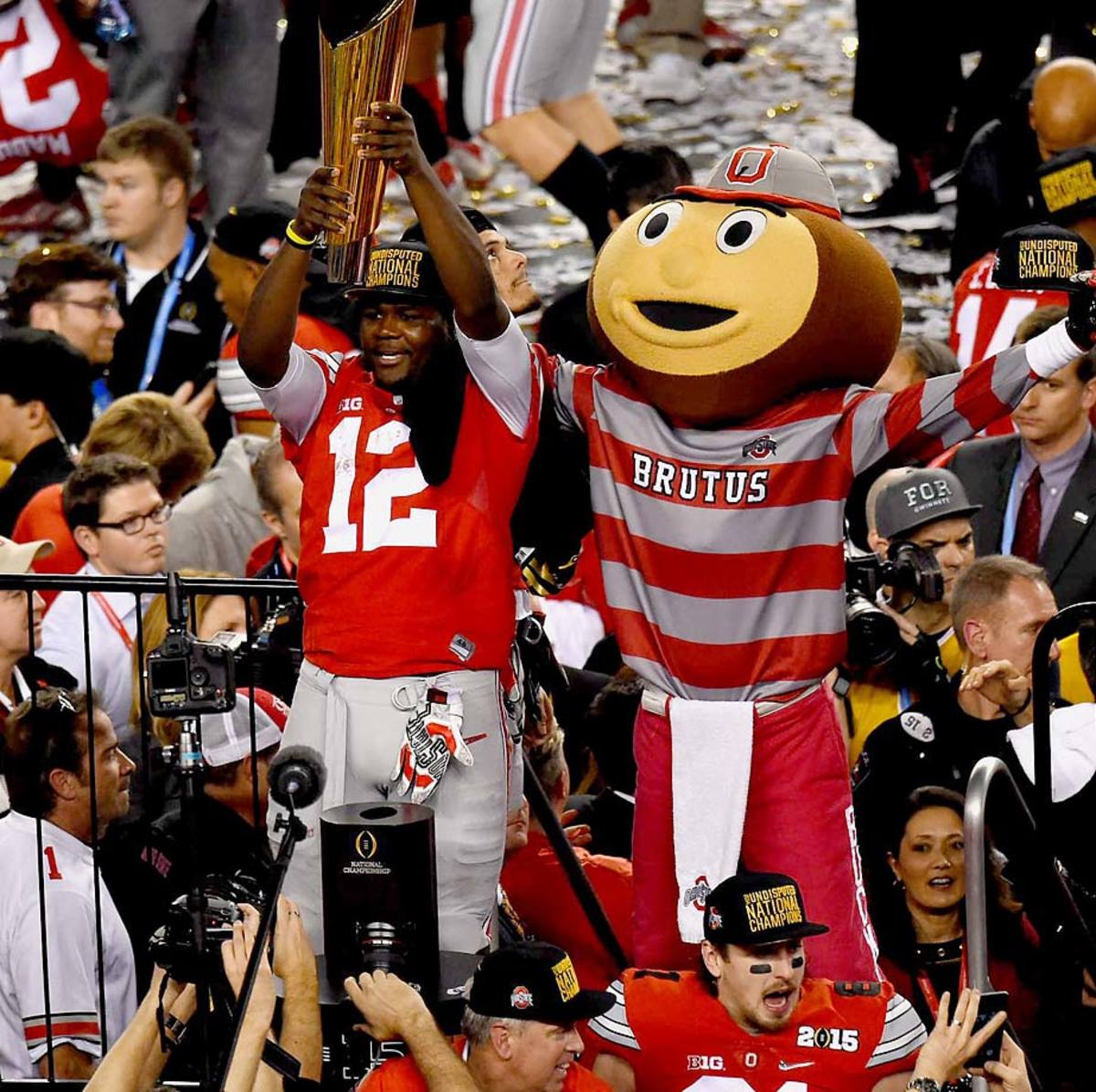
Ohio State quarterback Cardale Jones celebrates with the Buckeyes' mascot after his team's 42-20 win over Oregon in the National Championship game at AT&T Stadium in Arlington, Texas, Jan. 12, 2015.
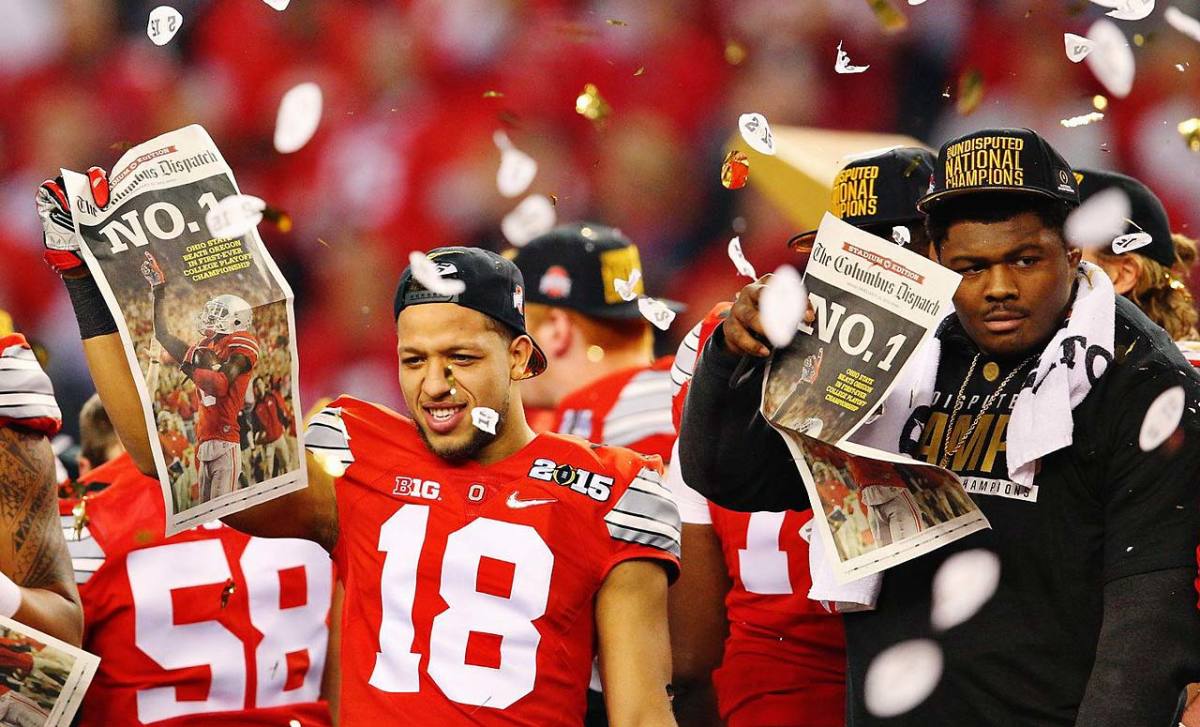
Ohio State wide receiver Kato Mitchell celebrates with his teammates after the Buckeyes' 42-20 win over Oregon.
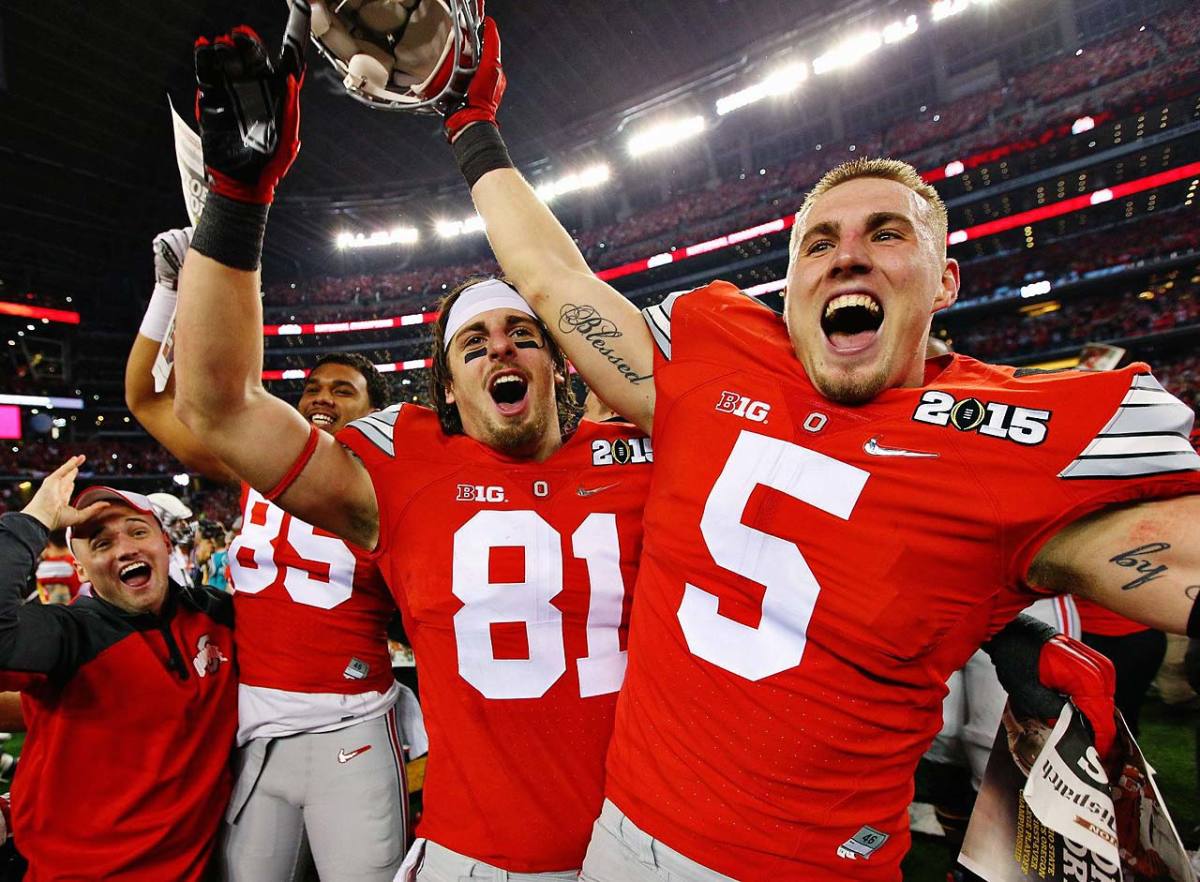
Ohio State's Jeff Heuerman (5), Nick Vannett (81) and Marcus Baugh (85) whoop it up at the national title game.
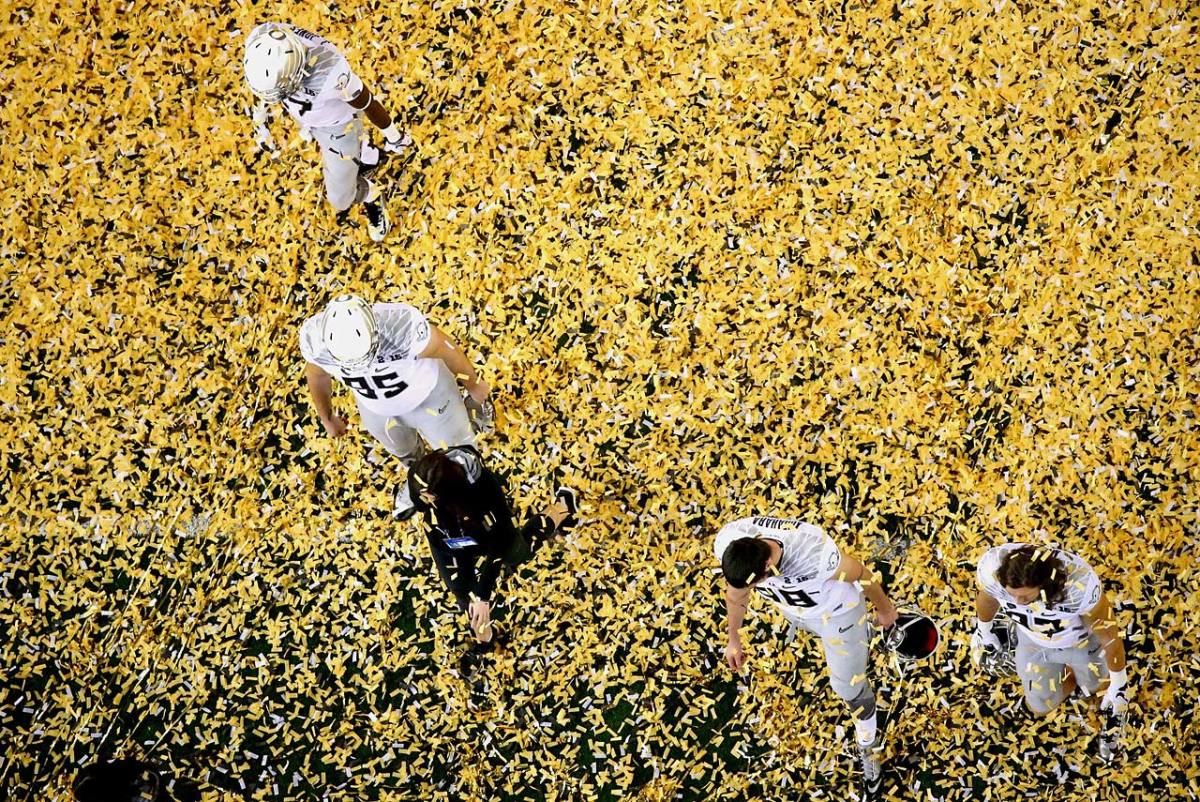
Oregon Ducks players and coaches walk off the field as the confetti falls in the wake of their 42-20 defeat at the hands of Ohio State.
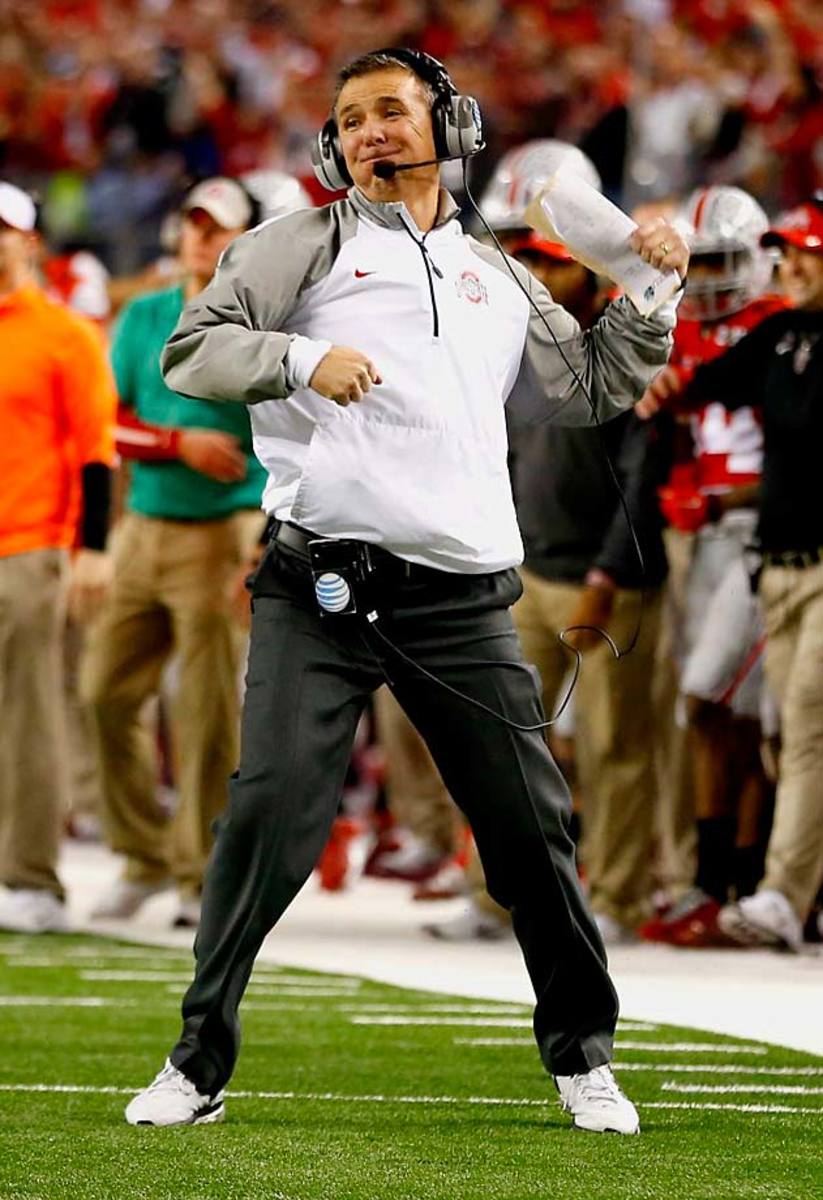
Ohio State Buckeyes coach Urban Meyer fist pumps during his team's 42-20 win over the Oregon Ducks.
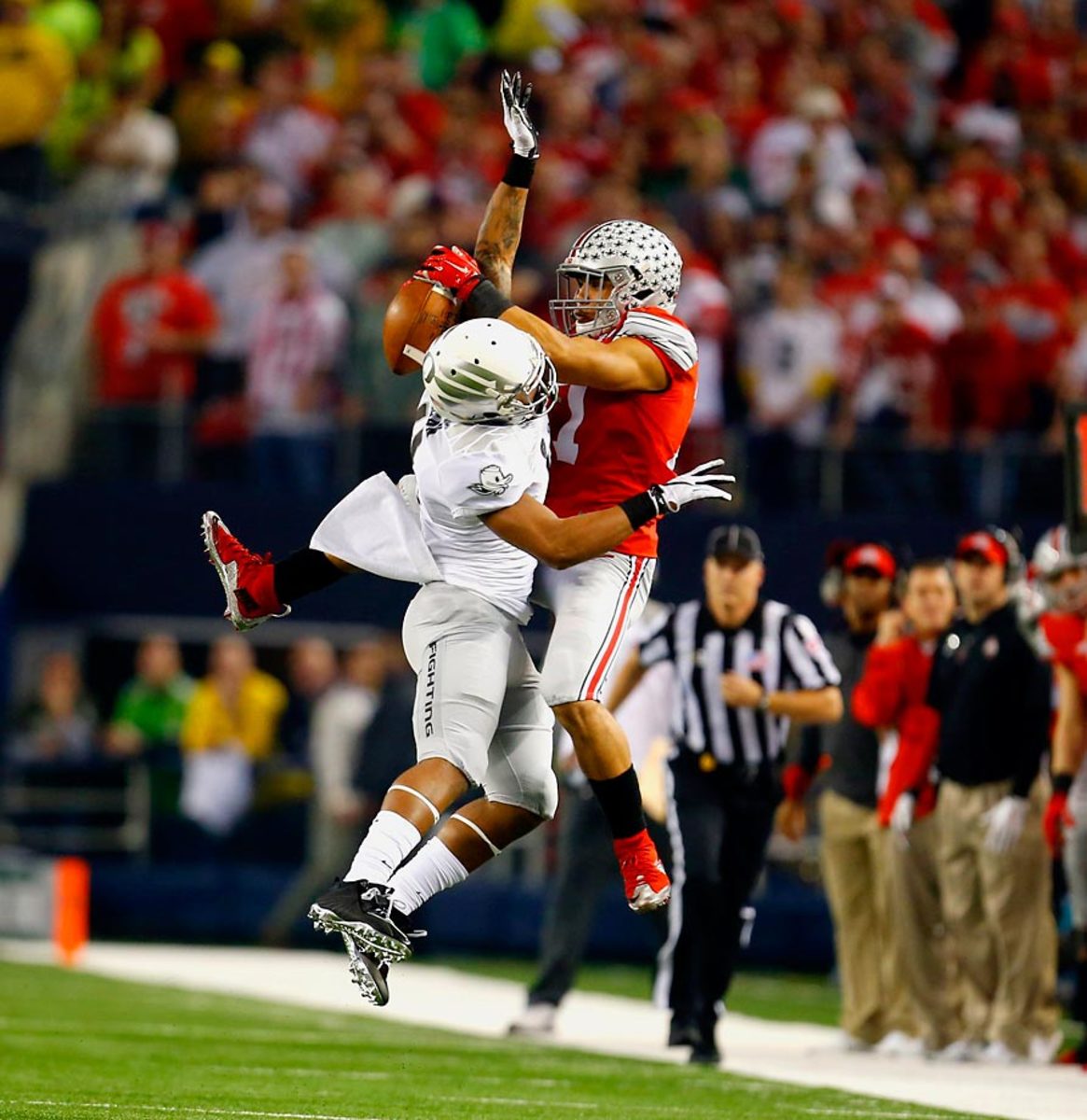
An Ohio State receiver catches the ball behind the back of an Oregon Ducks cornerback at AT&T Stadium in Arlington, Texas.
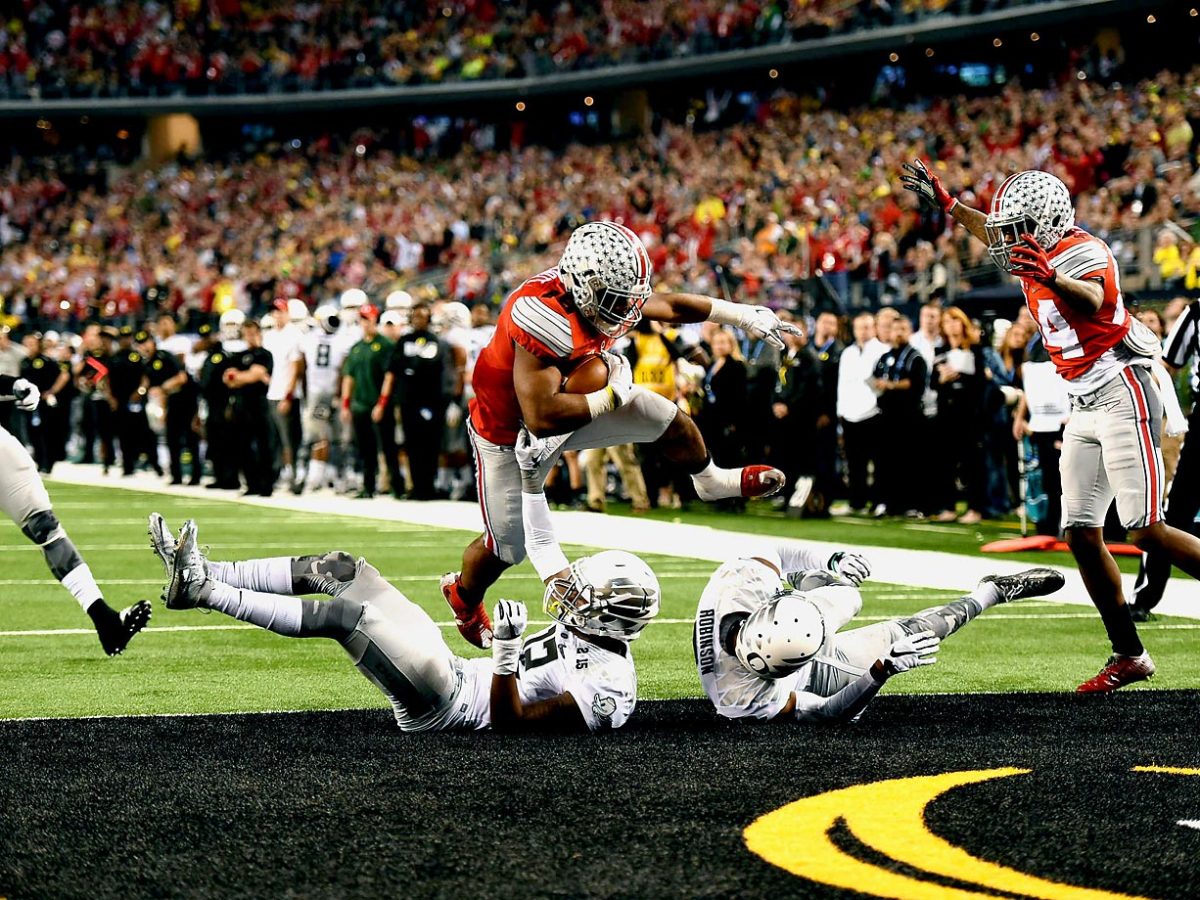
Ohio State running back Ezekiel Elliott runs over two Oregon Ducks for one of his four touchdowns.
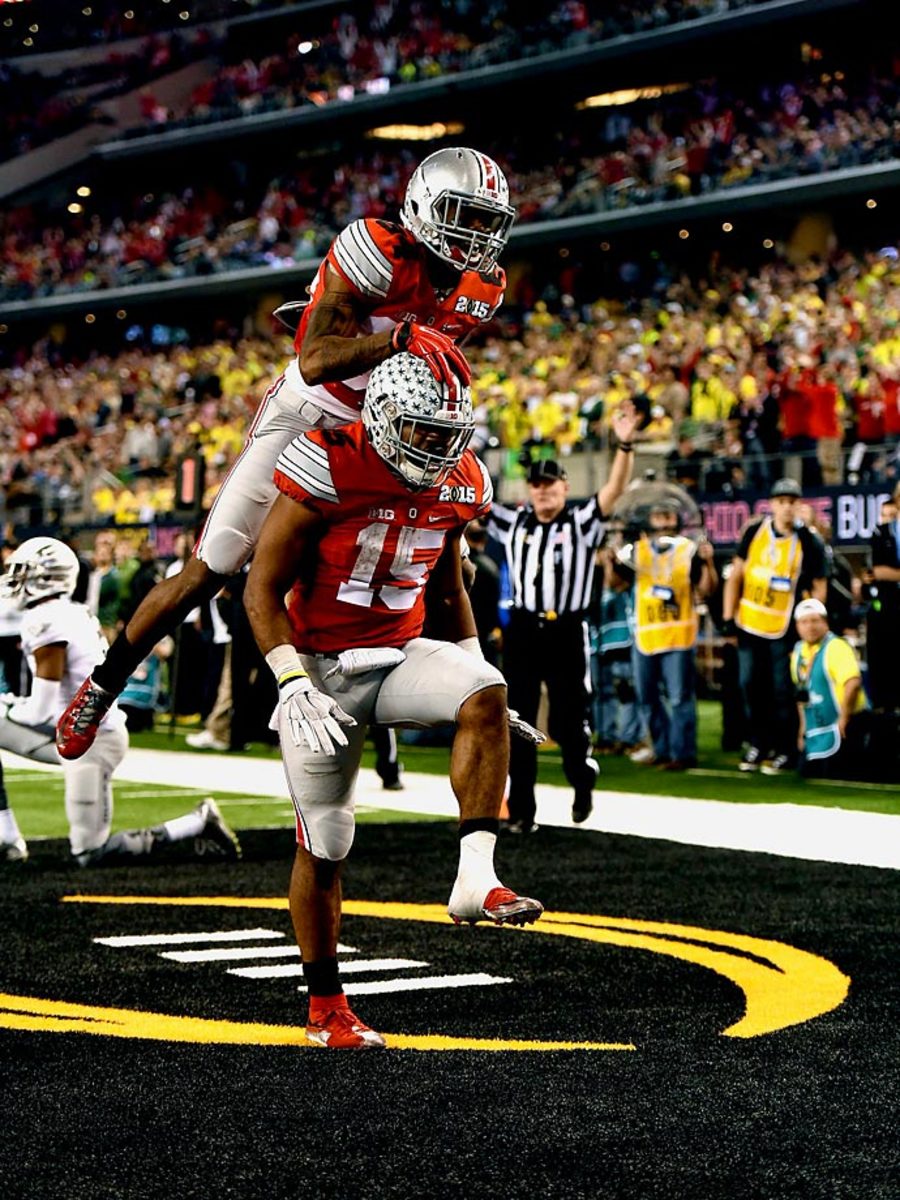
Ezekiel Elliott celebrates with teammate Corey Smith after one of his four touchdowns.
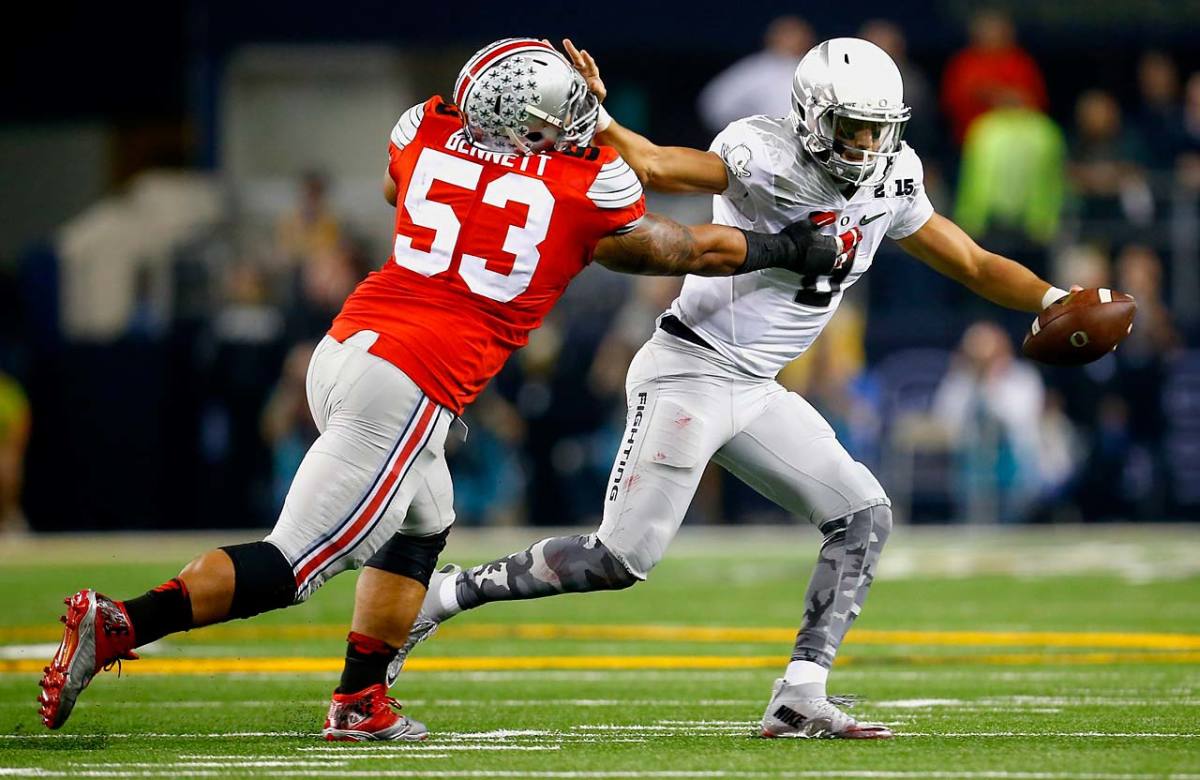
Oregon quarterback Marcus Mariota tries to stiff arm Ohio State linebacker Michael Bennett (53).
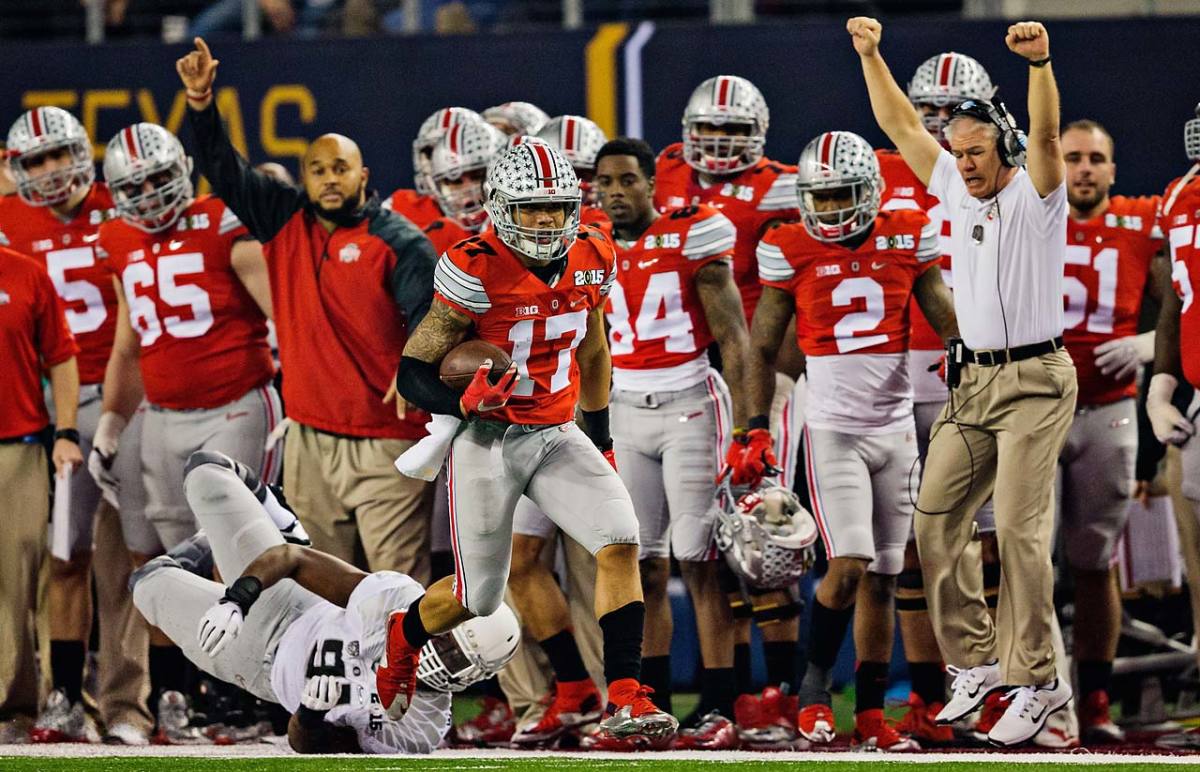
Ohio State receiver Jalin Marshall evades an Oregon defender along the sideline.
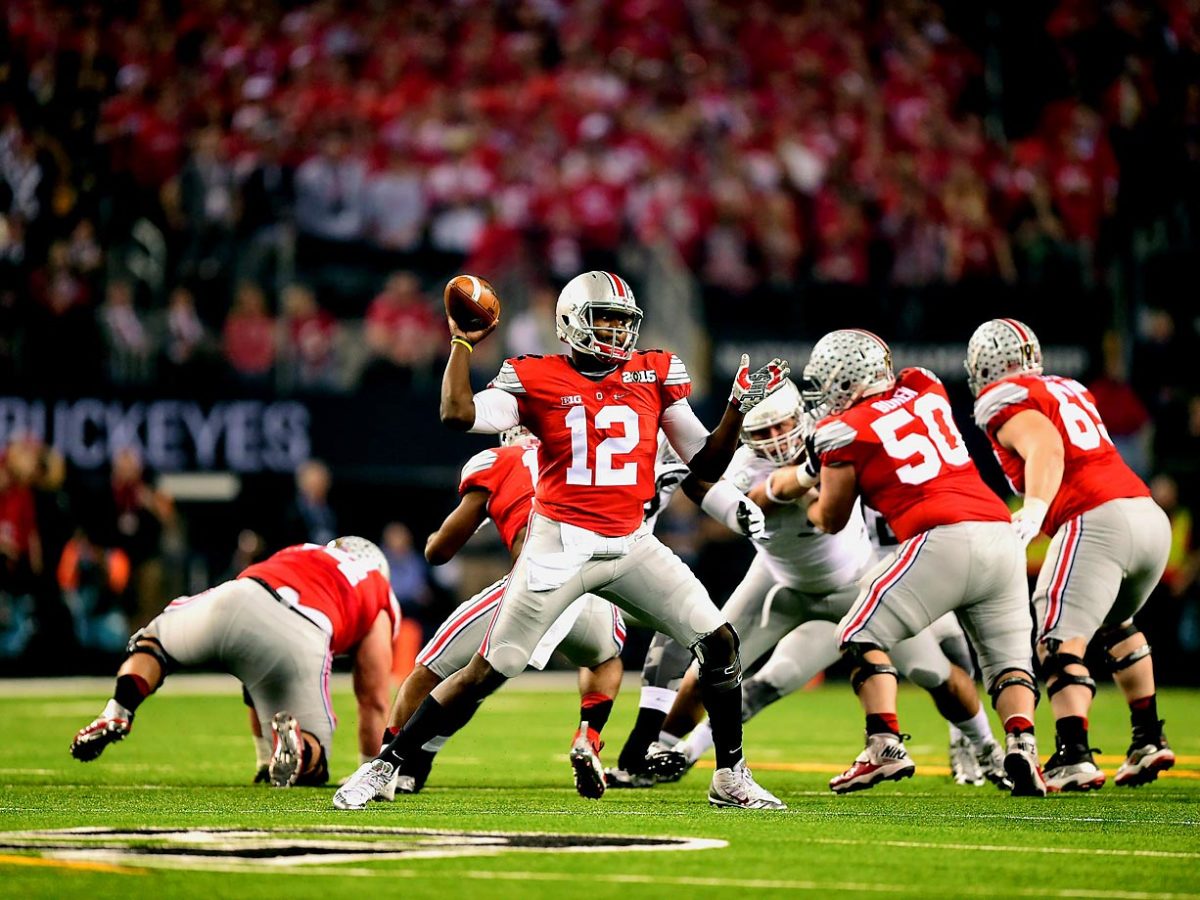
Ohio State quarterback Cardale Jones drops back to throw. Jones finished with 242 yards against the Oregon Ducks in the Buckeyes' 42-20 win.
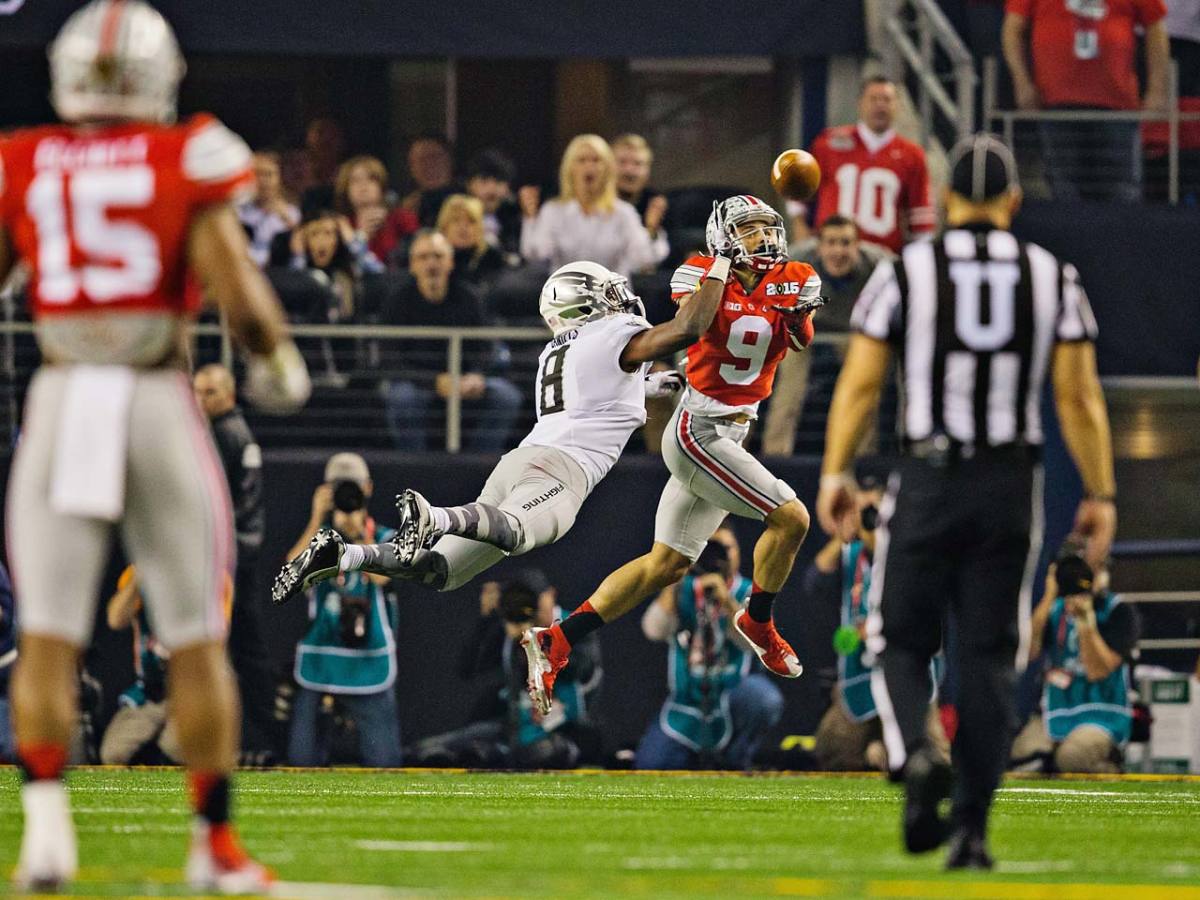
Ohio State wide receiver Devin Smith attempts a catch over Oregon cornerback Reggie Daniels.
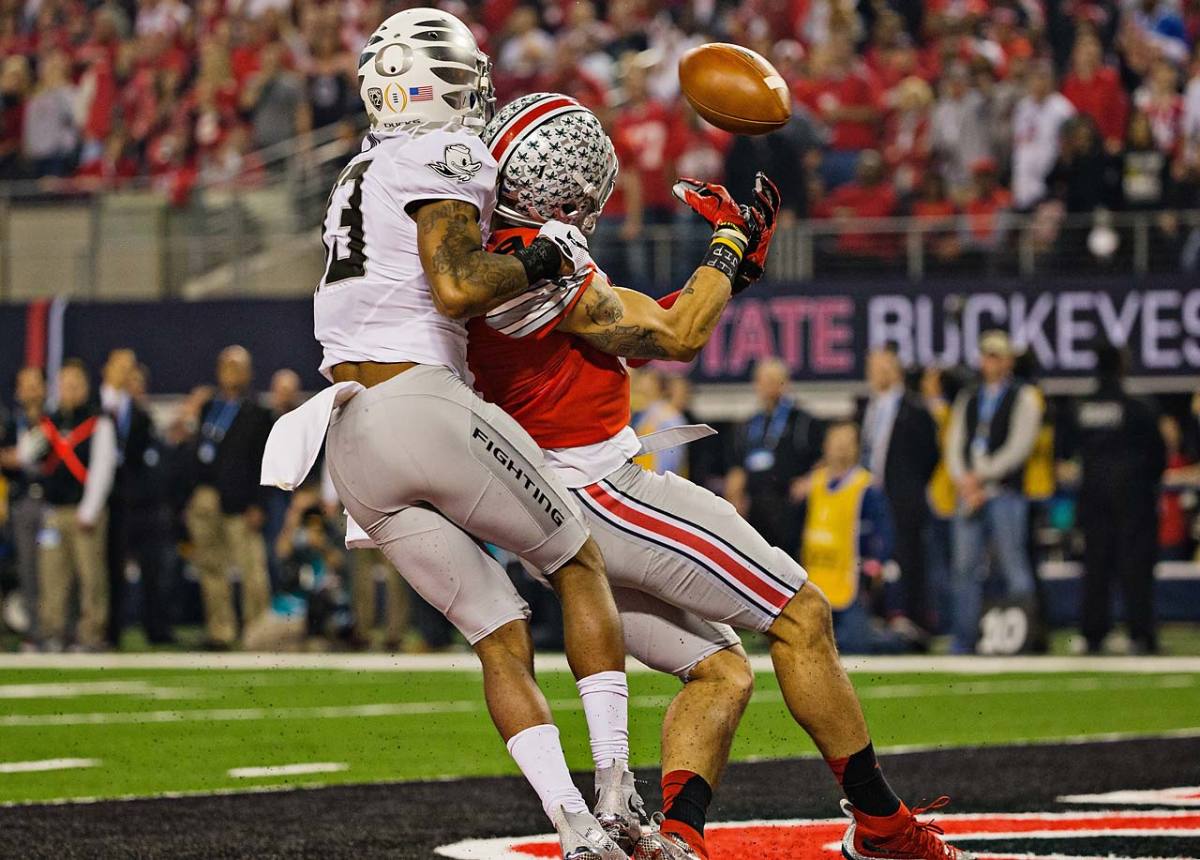
Oregon was called for pass interference on this play in the end zone.
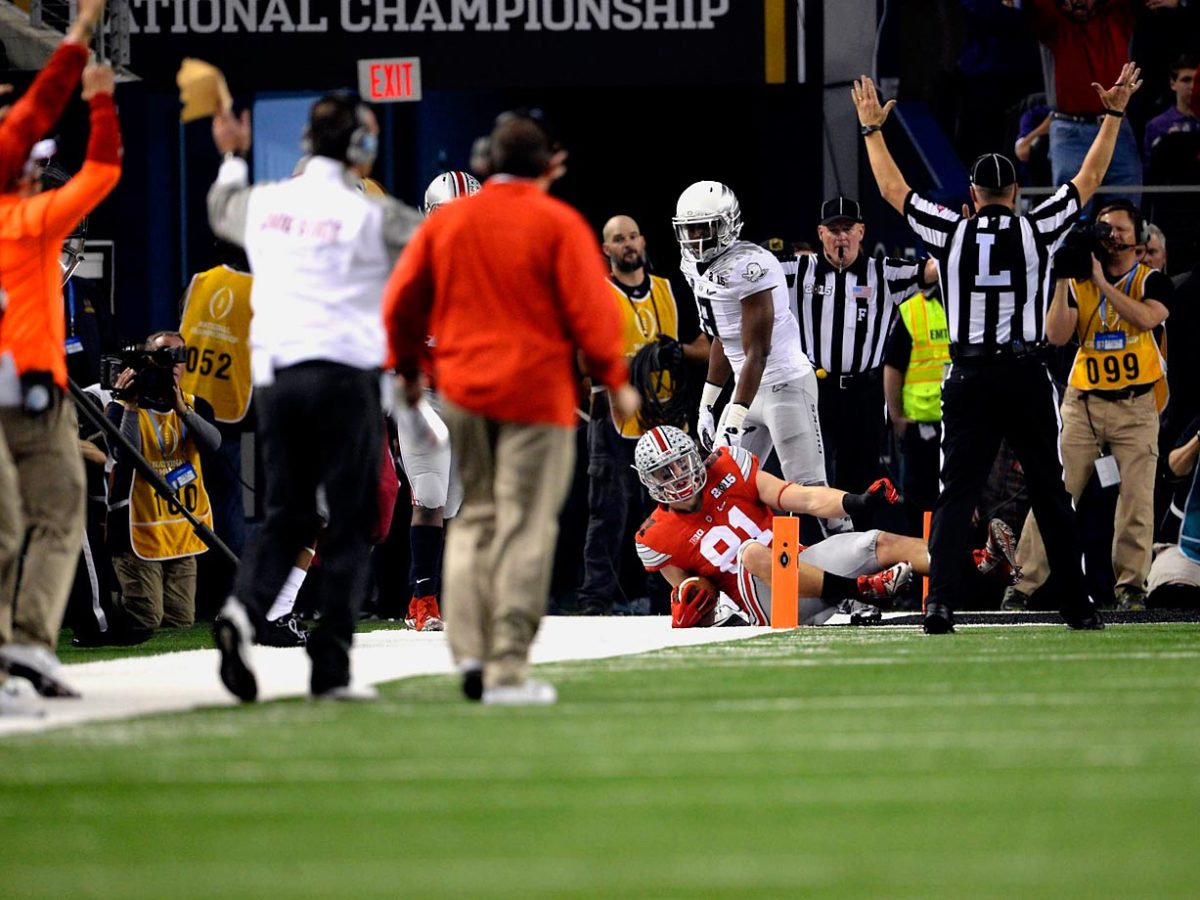
Ohio State tight end Nick Vannett goes to the ground after his touchdown catch in the first half.
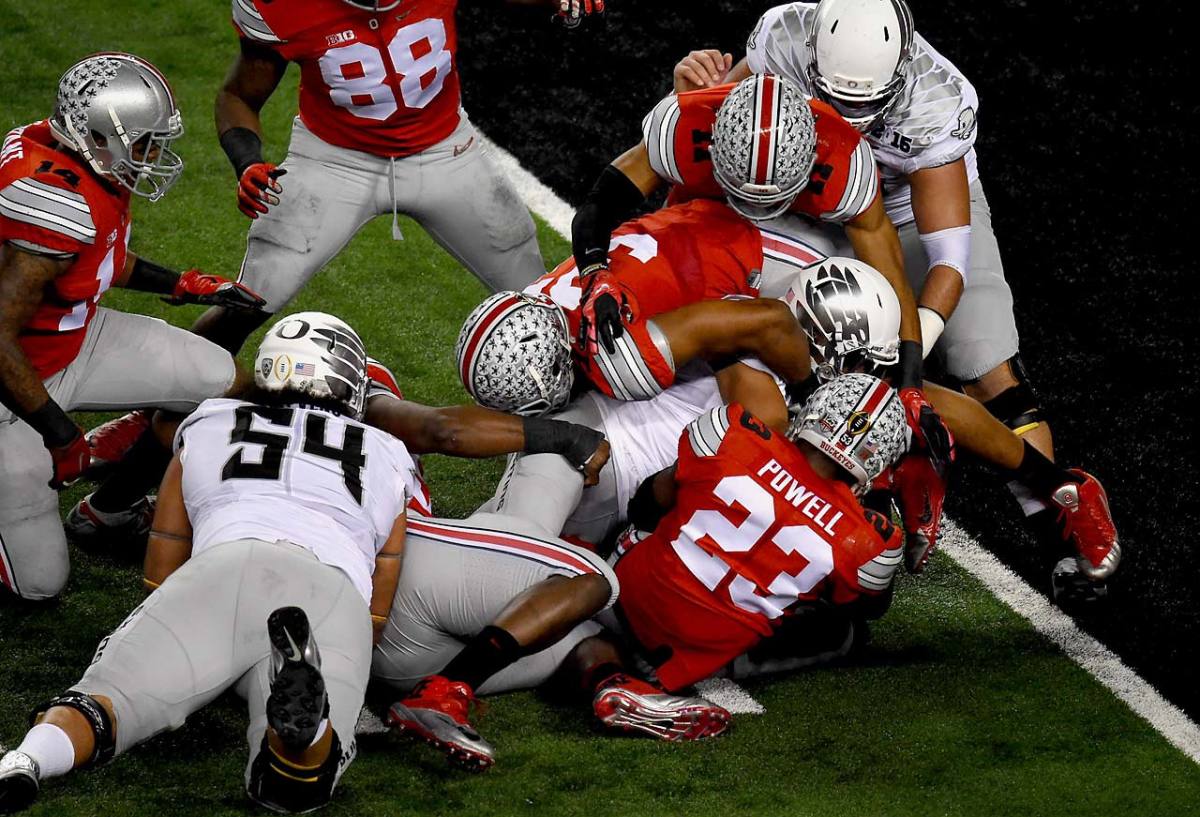
Ohio State safety Tyvis Powell stops Oregon running back Thomas Tyner short of the goal line in the Buckeyes' 42-20 win.
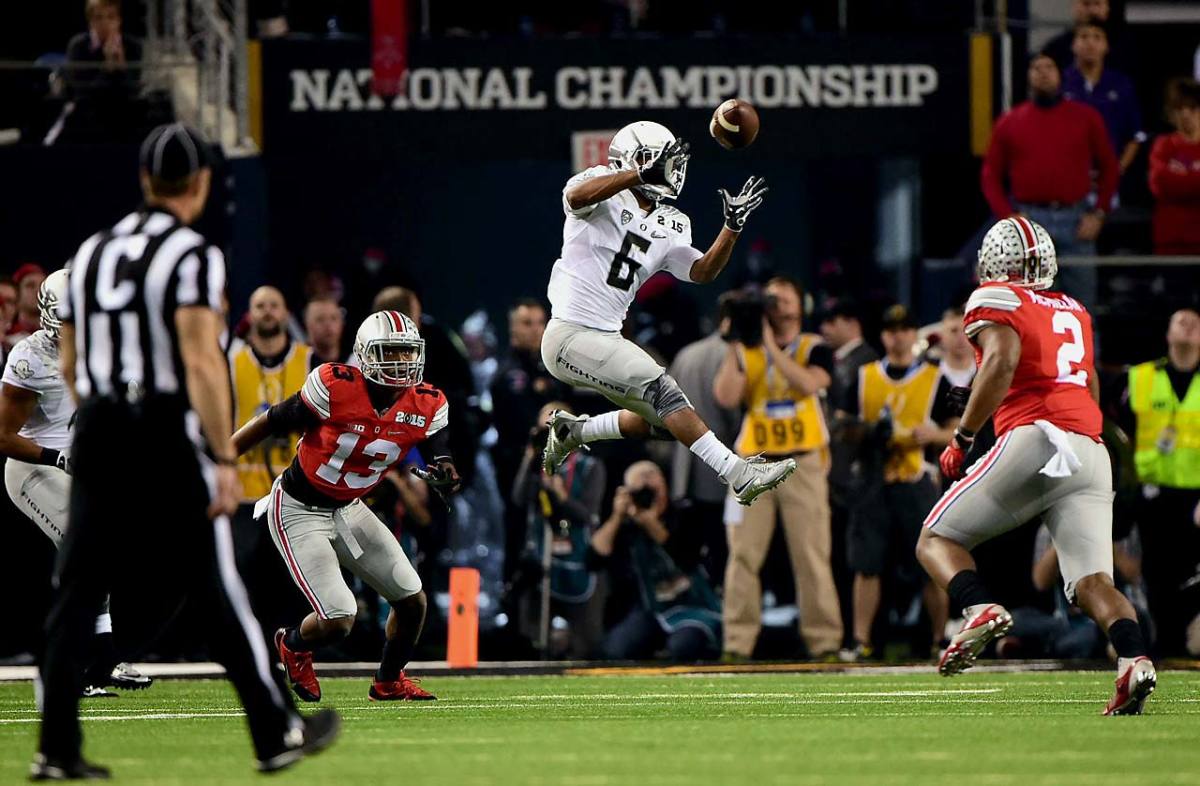
Oregon wide receiver Charles Nelson rises for a catch between two Ohio State defenders.
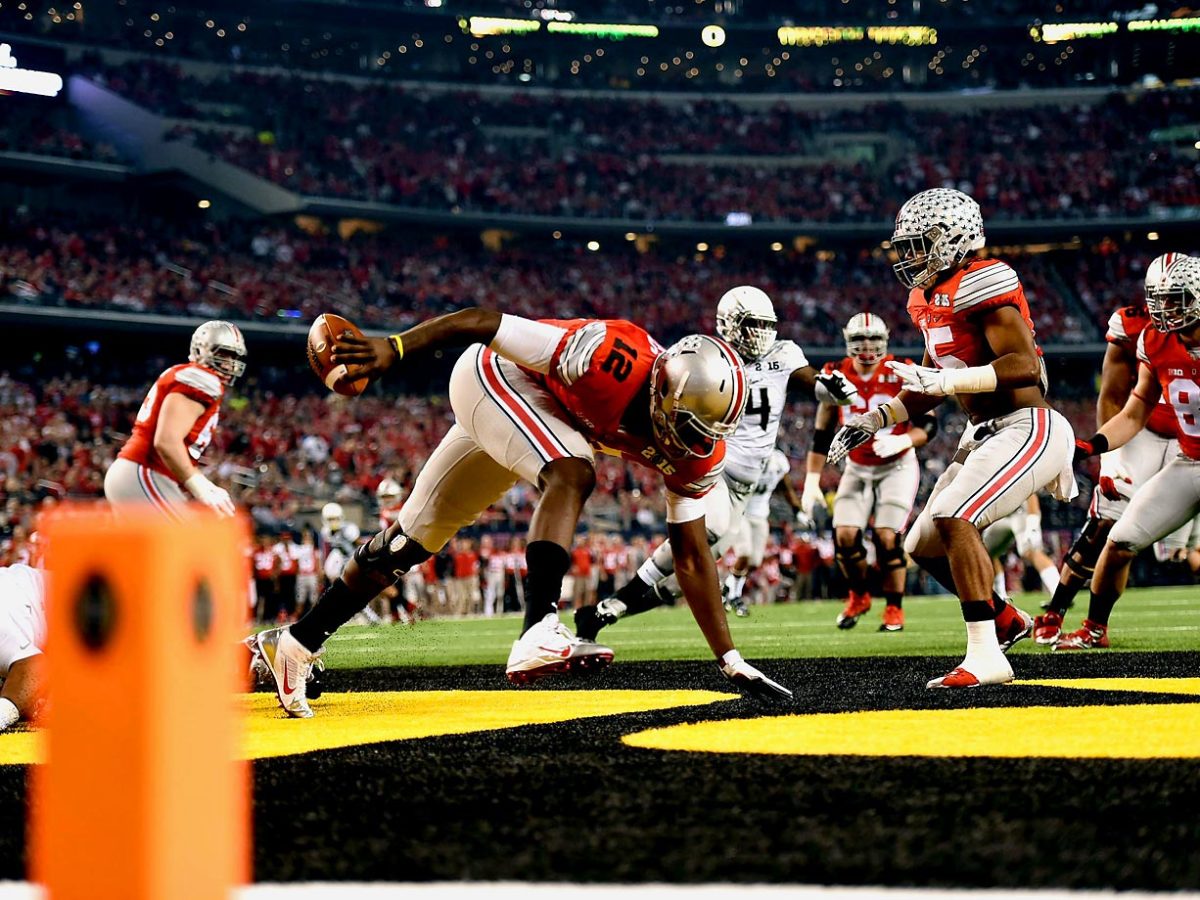
Ohio State quarterback Cardale Jones stumbles in his own end zone as the Oregon defense pursues him. Jones avoided a safety on the play.
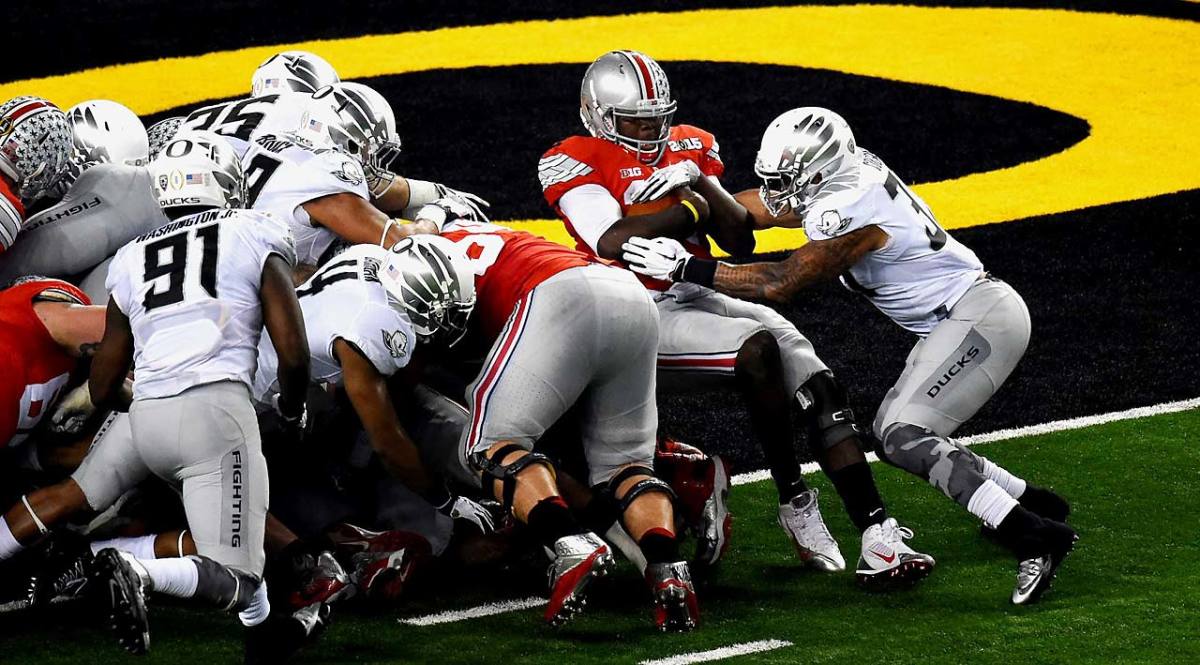
Ohio State quarterback Cardale Jones spun out of a tackle and bulled his way in for a touchdown on this play.
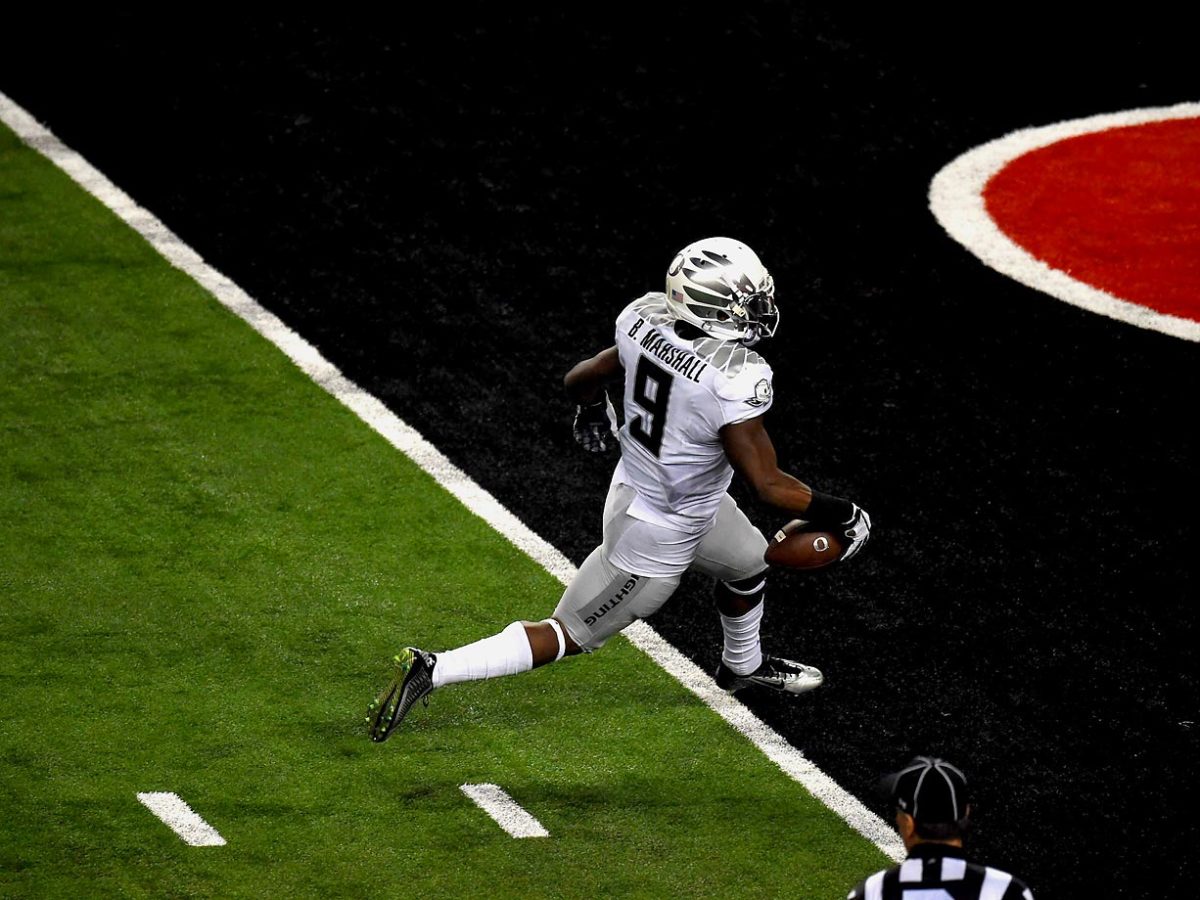
Replay officials took a close look to see if Byron Marshall let the ball go before he crossed the goal line on this play.
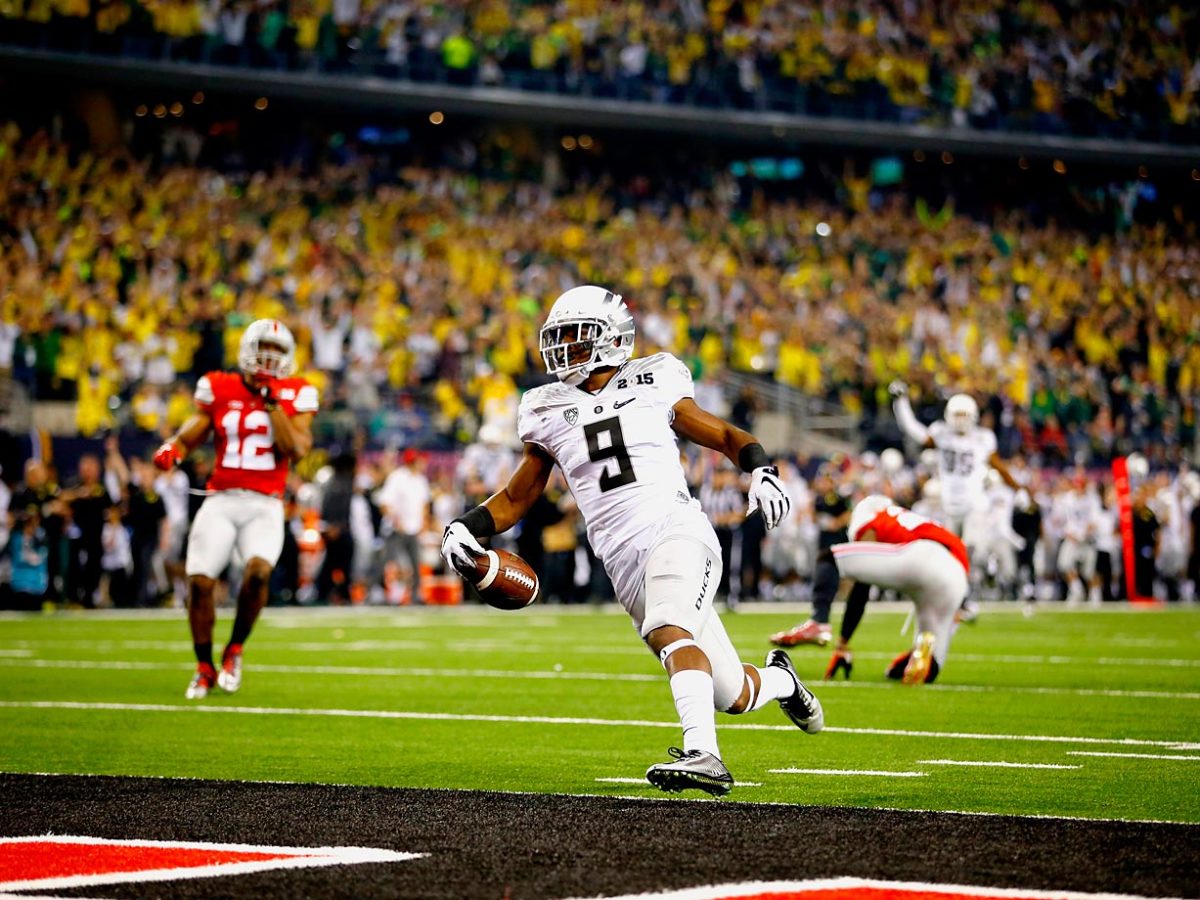
Byron Marshall could have cost his team a touchdown had he celebrated by dropping the ball too early.
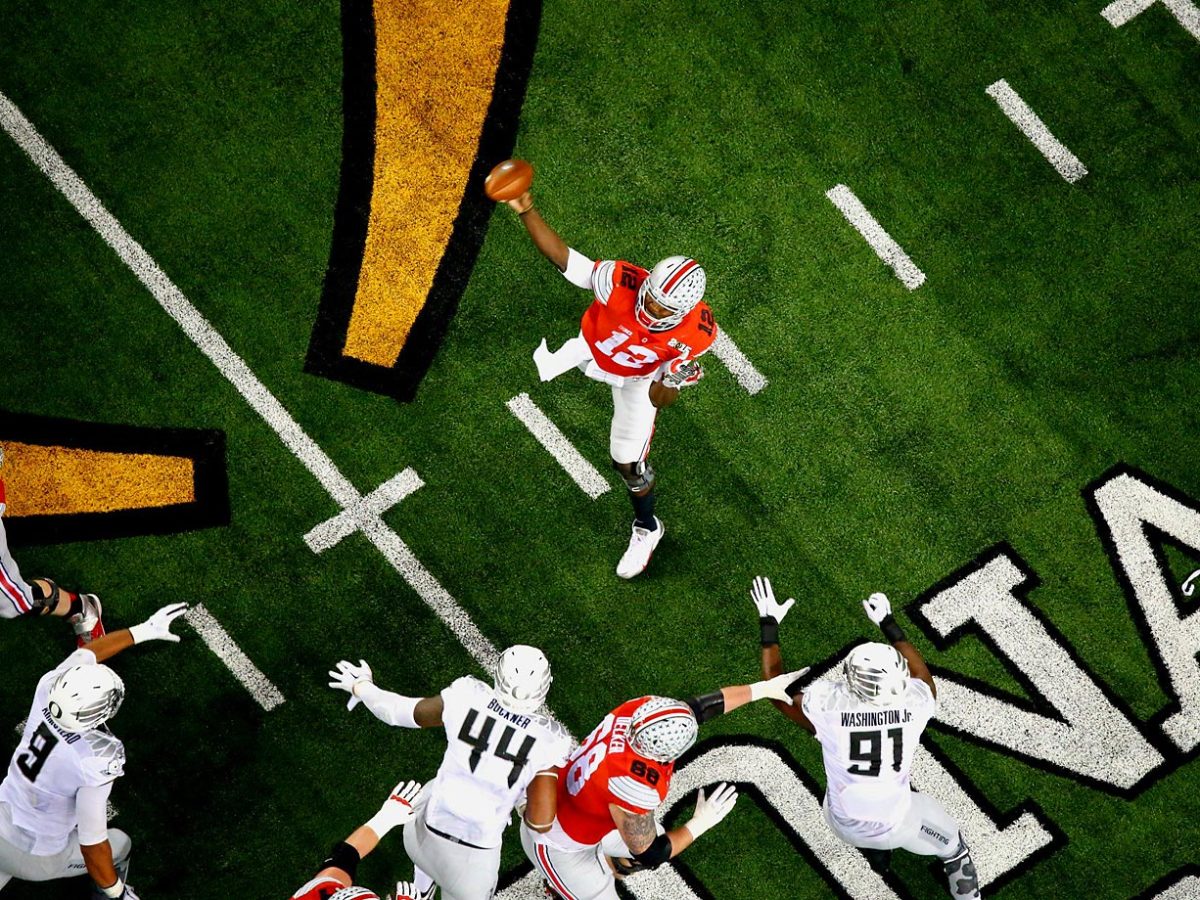
Ohio State quarterback Cardale Jones prepares to throw in the face of three Oregon defensive linemen. Jones completed 16 of his 23 passes during the Buckeyes' 42-20 win.
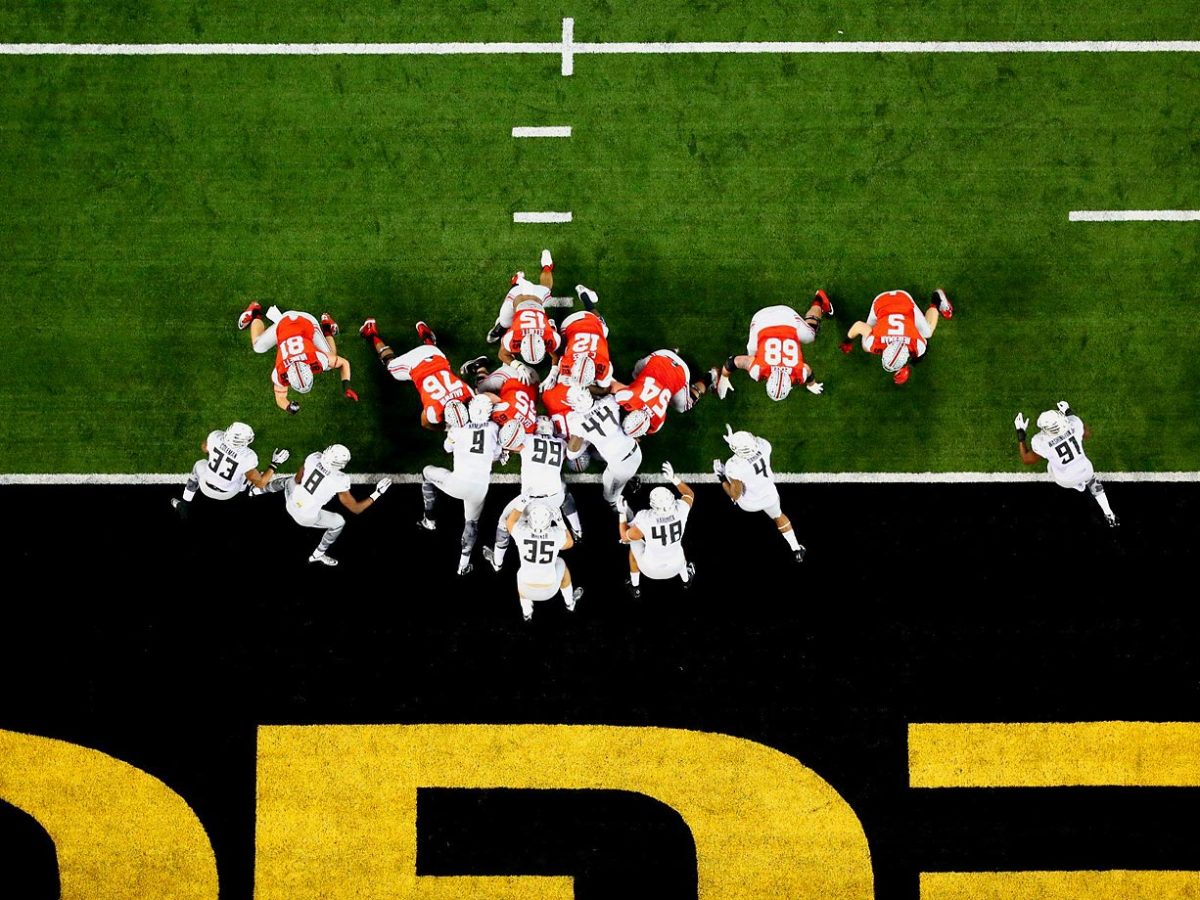
Ohio State lines up for a quarterback sneak at the one-yard line against the Oregon defense.
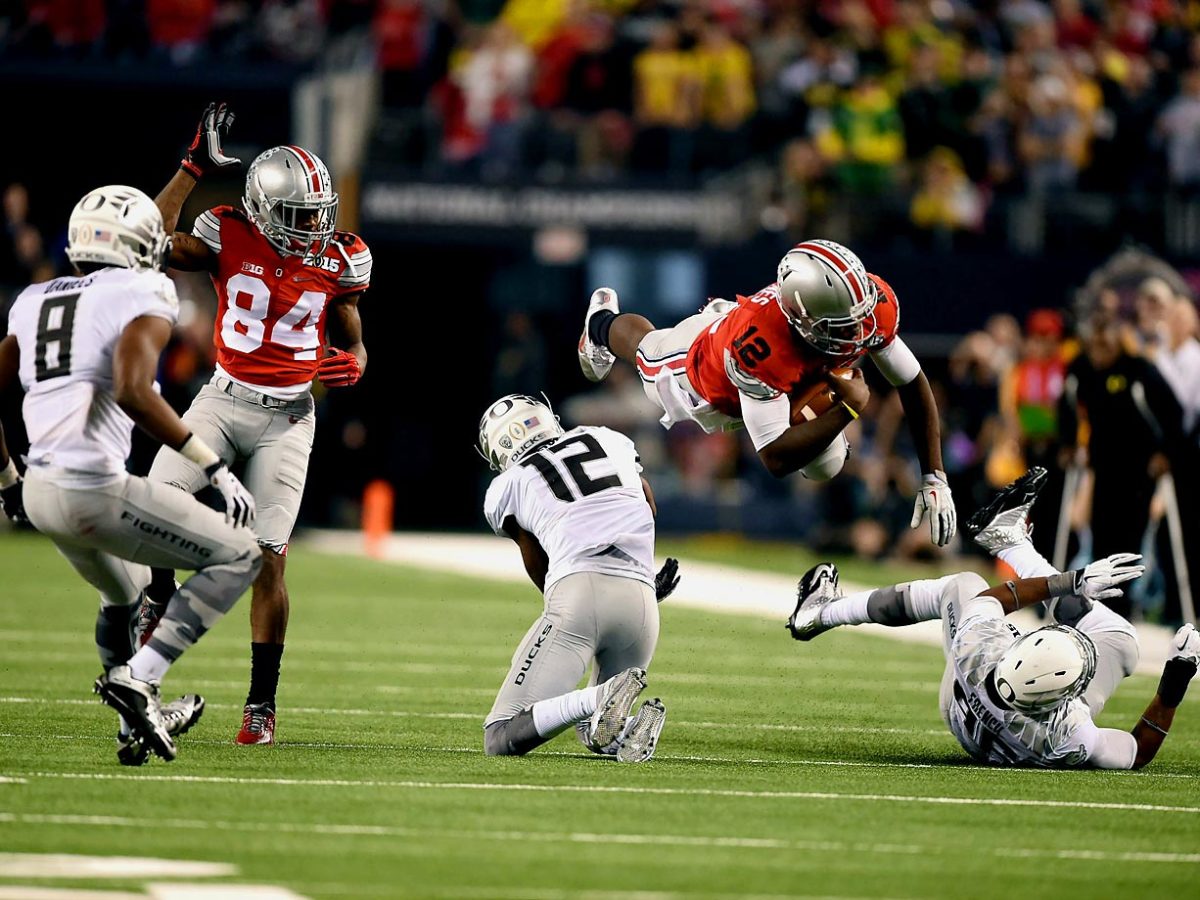
Ohio State quarterback Cardale Jones leaps over two Oregon defenders. Jones ran for 38 yards on 21 carries in the Buckeyes' 42-20 win.
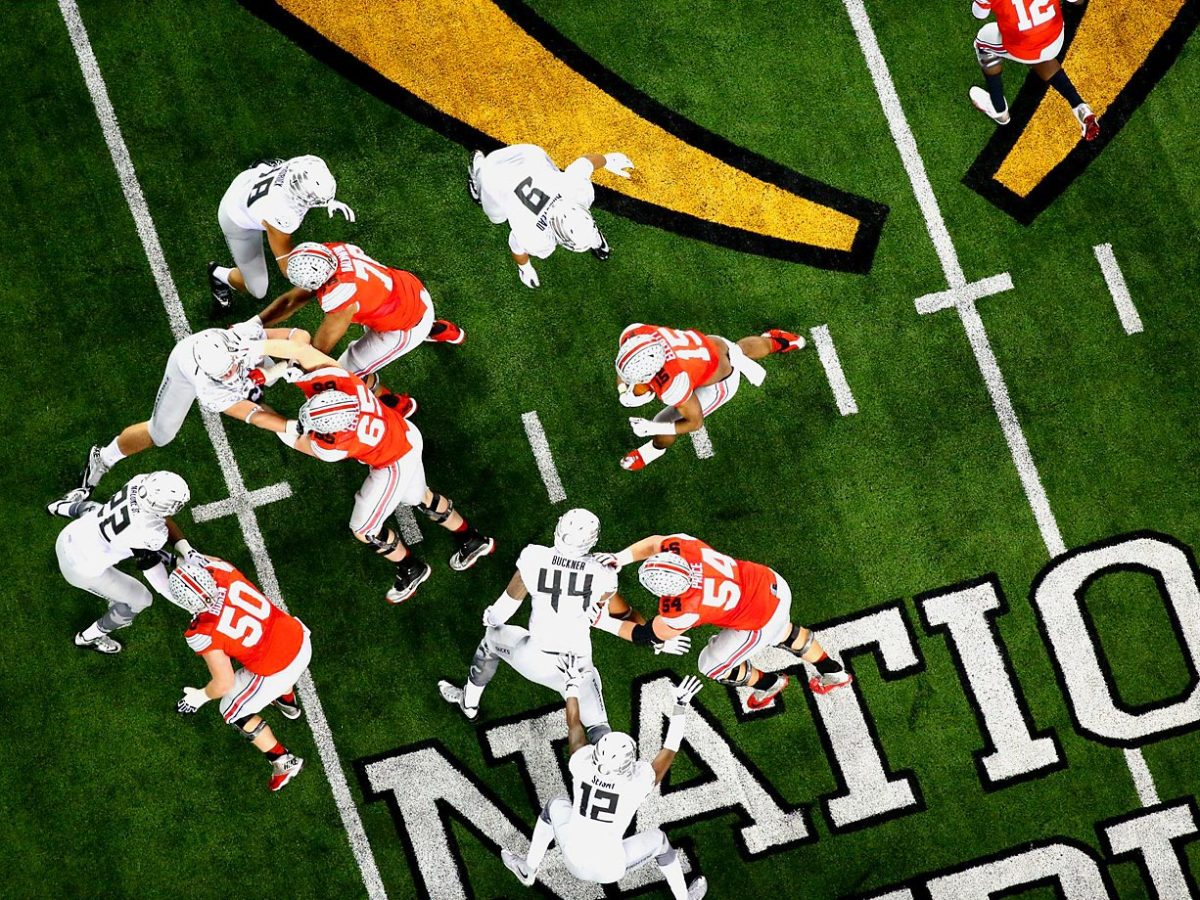
Ohio State running back Ezekiel Elliott ran for over 200 yards in all three games that Cardale Jones started at QB for the Buckeyes.
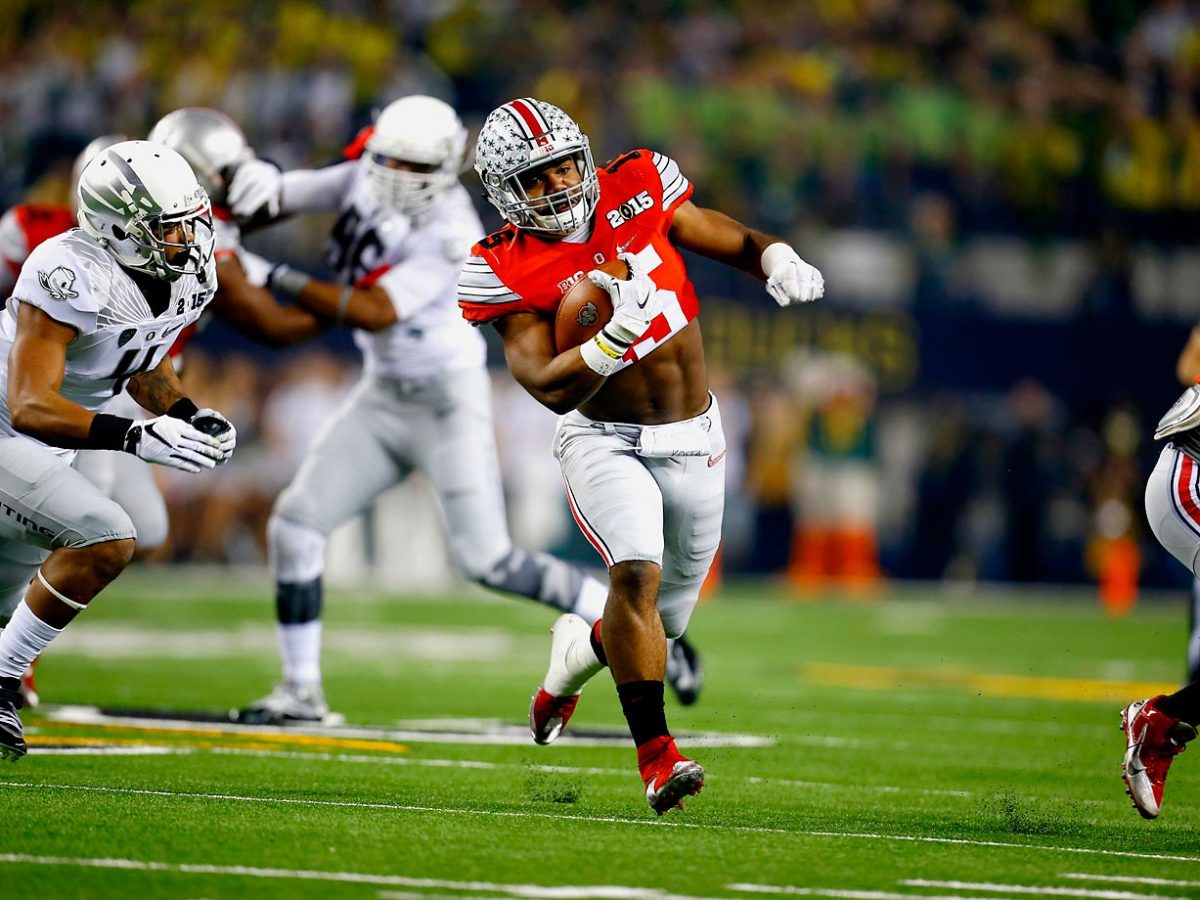
Ezekiel Elliott evades an Oregon defender -- something he did all night.
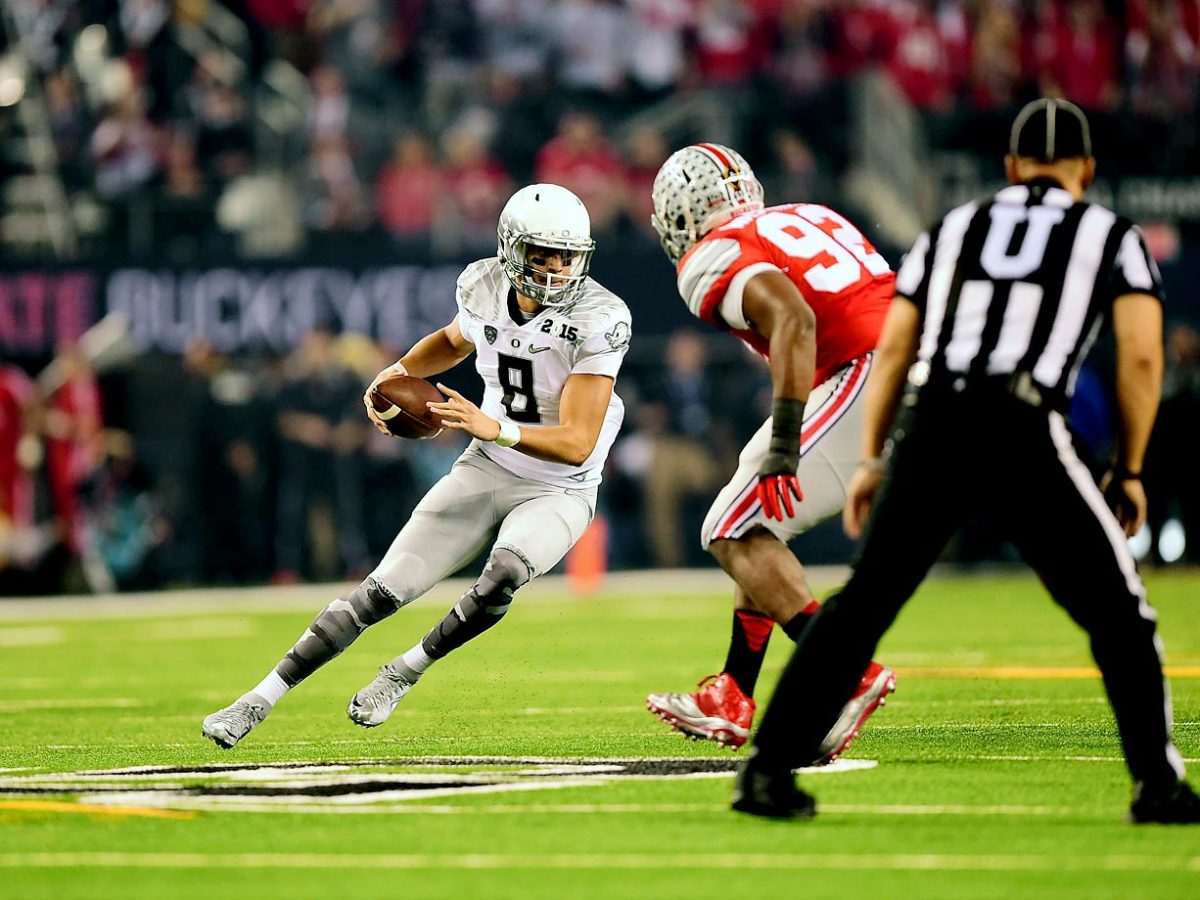
Oregon quarterback Marcus Mariota tries to evade Ohio State defensive lineman Adolphus Washington. Mariota threw for 333 yards in the Ducks' loss.
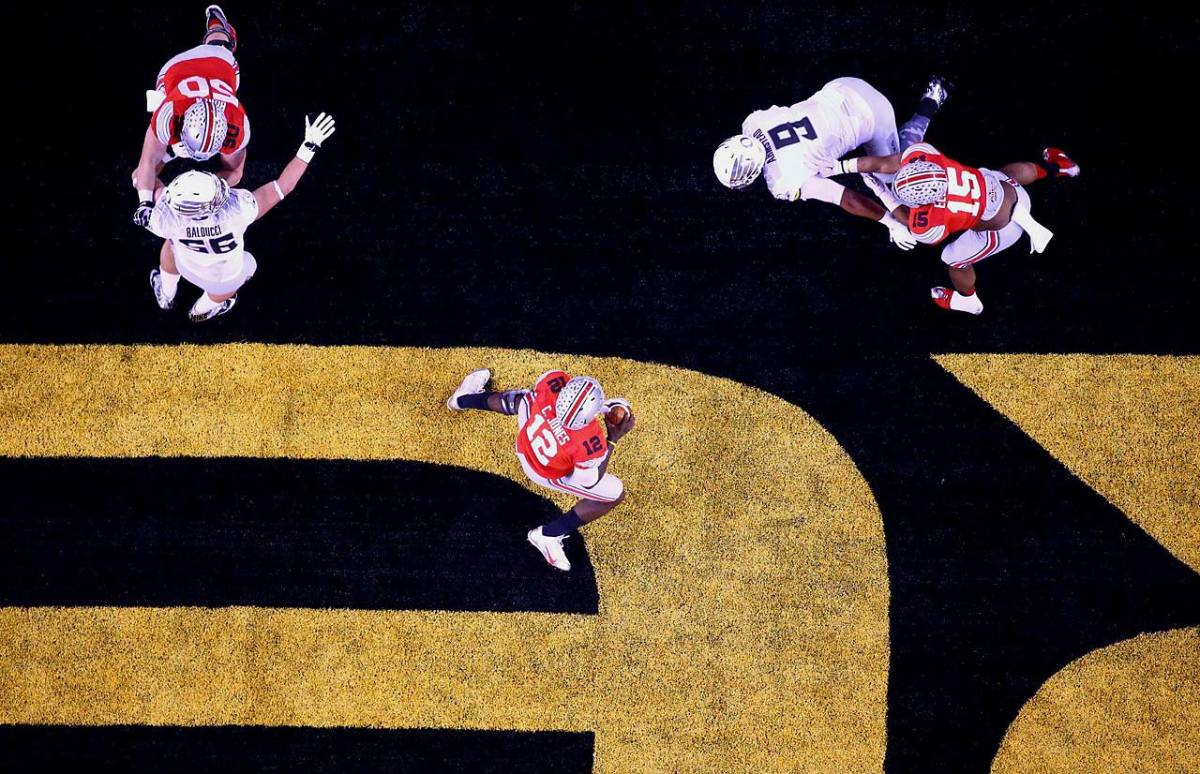
Ohio State quarterback Cardale Jones throws from his own end zone during the Buckeyes' 42-20 win.
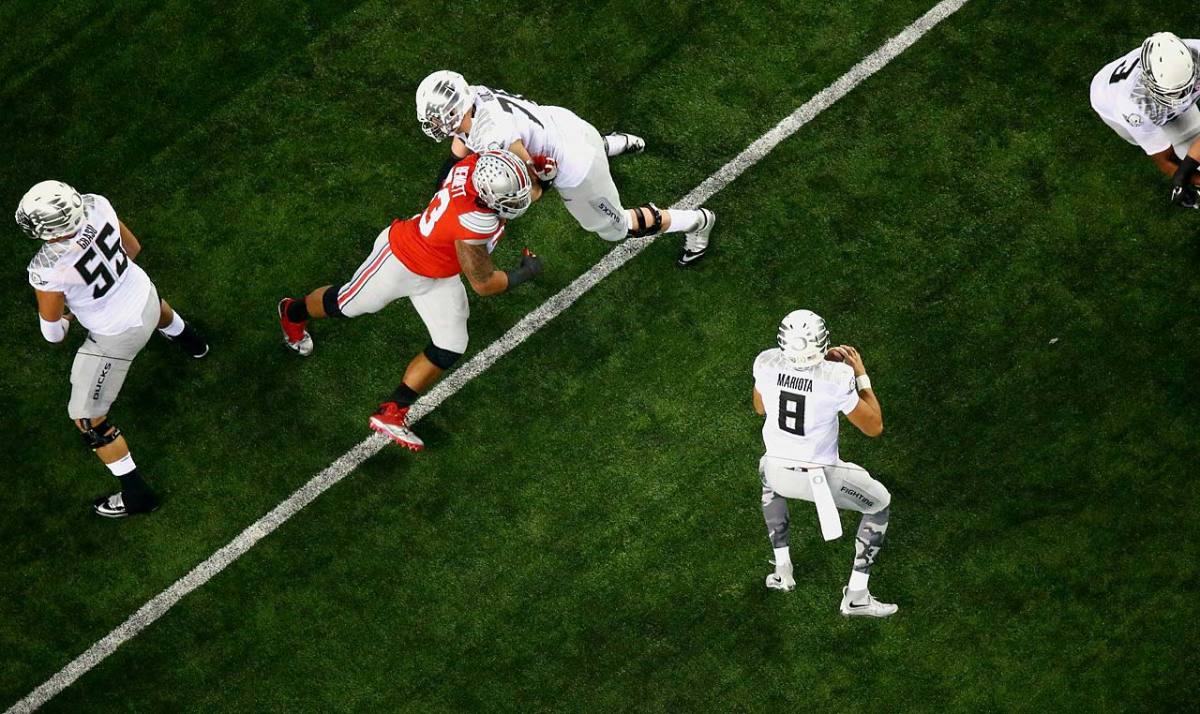
Oregon quarterback Marcus Mariota drops back to pass. Mariota combined for 372 yards in the air and on the ground.
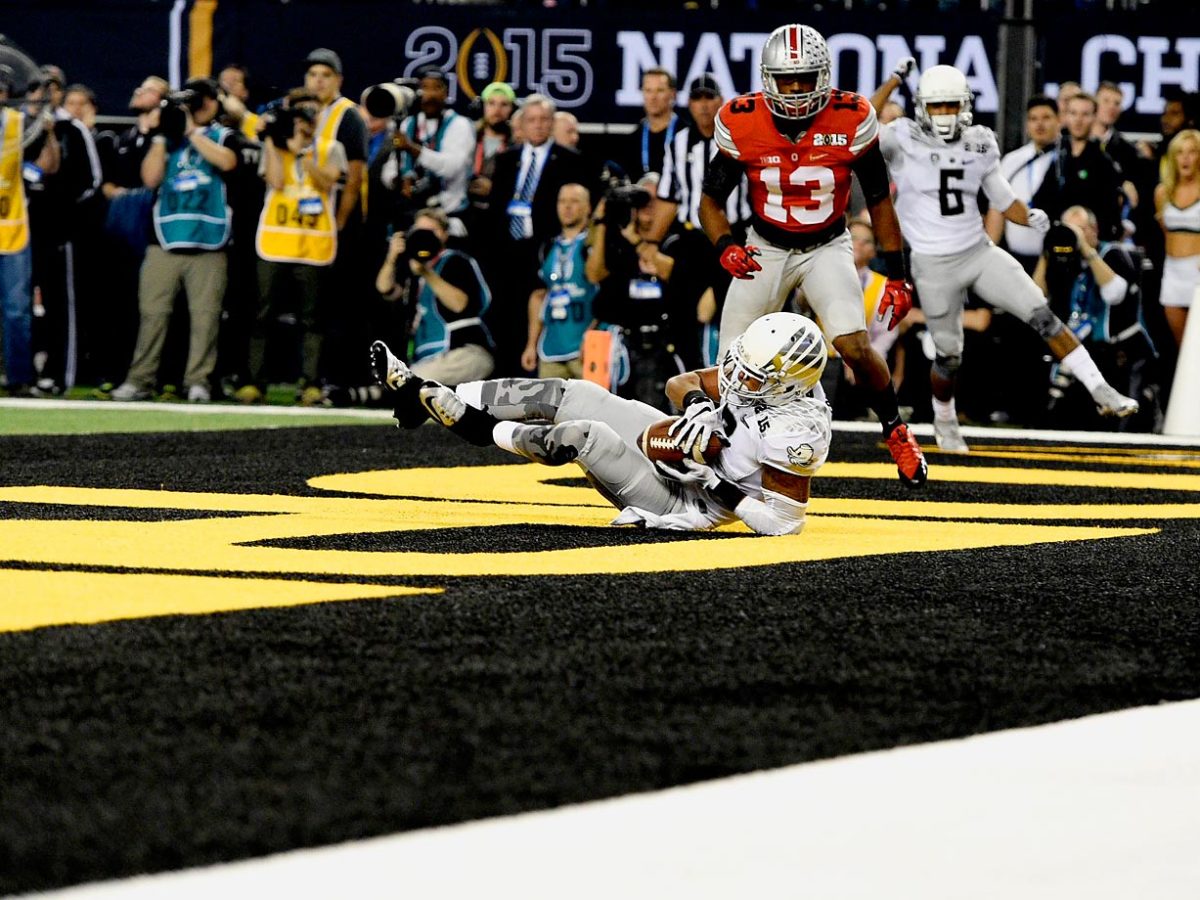
Oregon wide receiver Keanon Lowe catches a touchdown pass for the first score in the National Championship game.
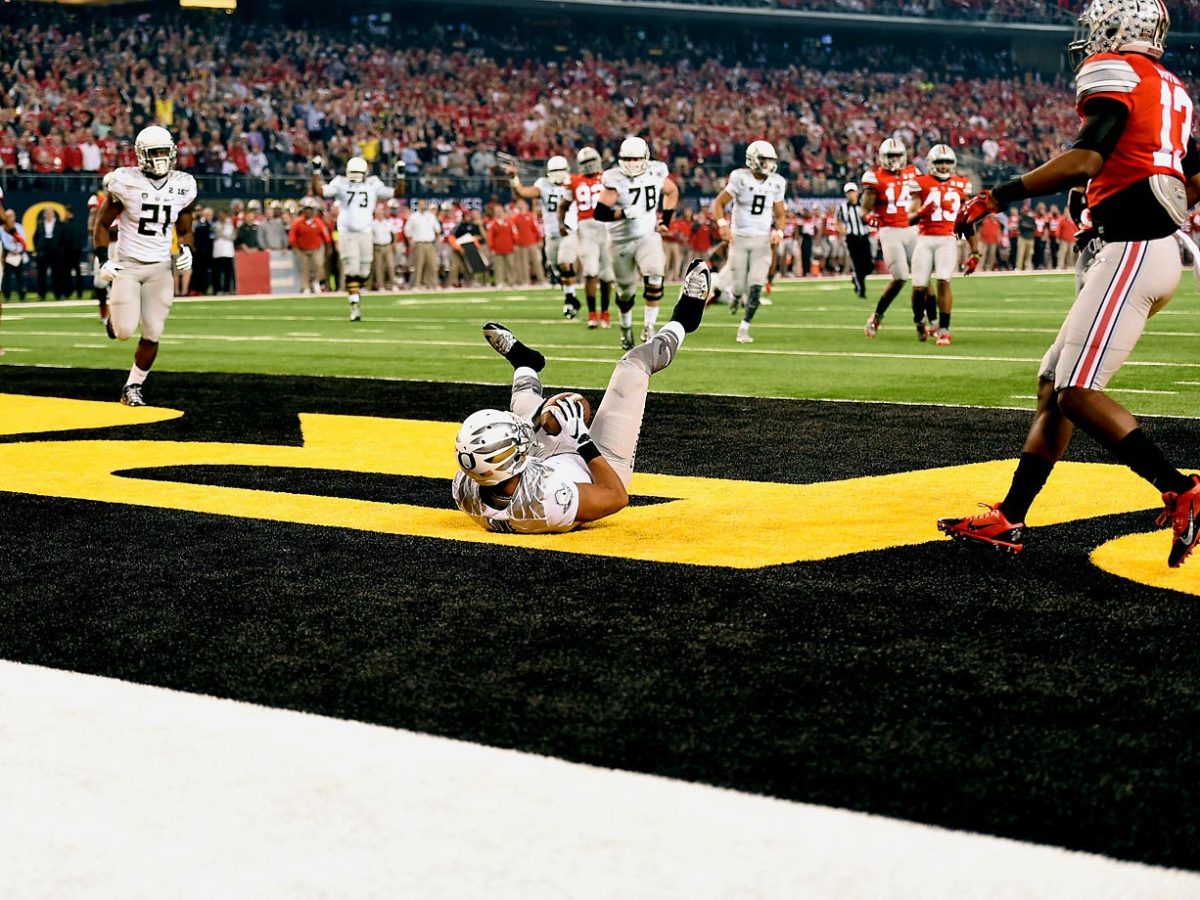
Keanon Lowe's touchdown gave the Ducks false hopes that this would be their night. Despite getting four Ohio State turnovers, Oregon scored only 20 points.
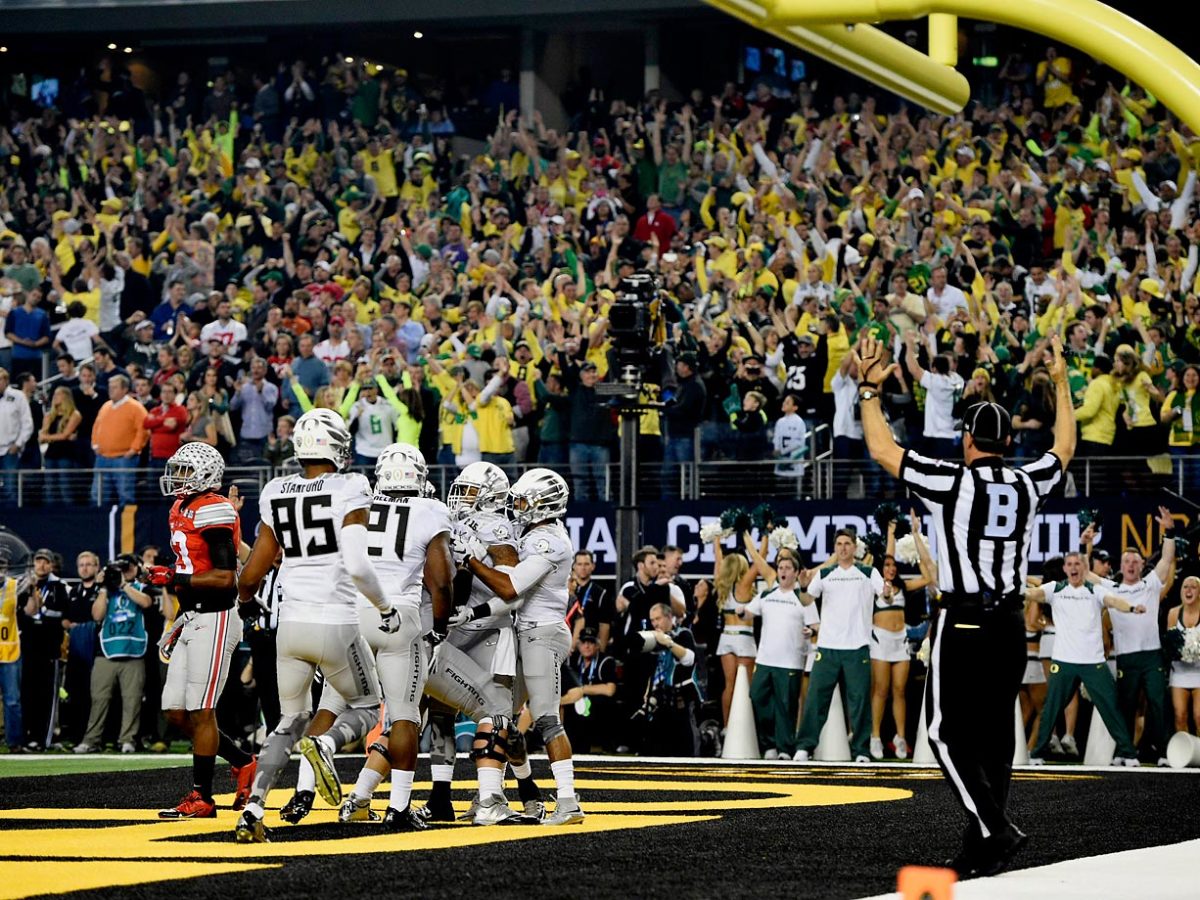
Oregon celebrates its first touchdown.
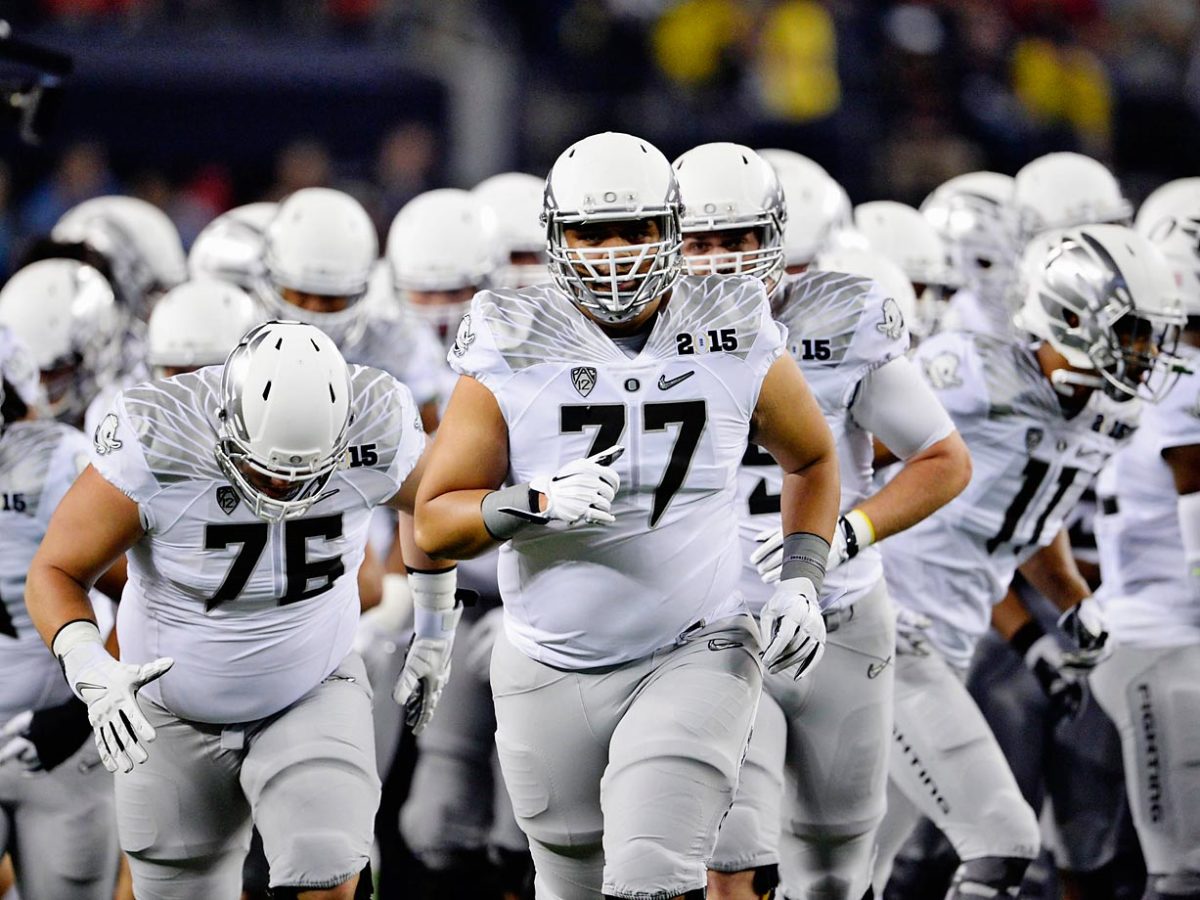
Oregon offensive lineman Hanitelli Louisi leads the Ducks on to the field for the National Championship game.
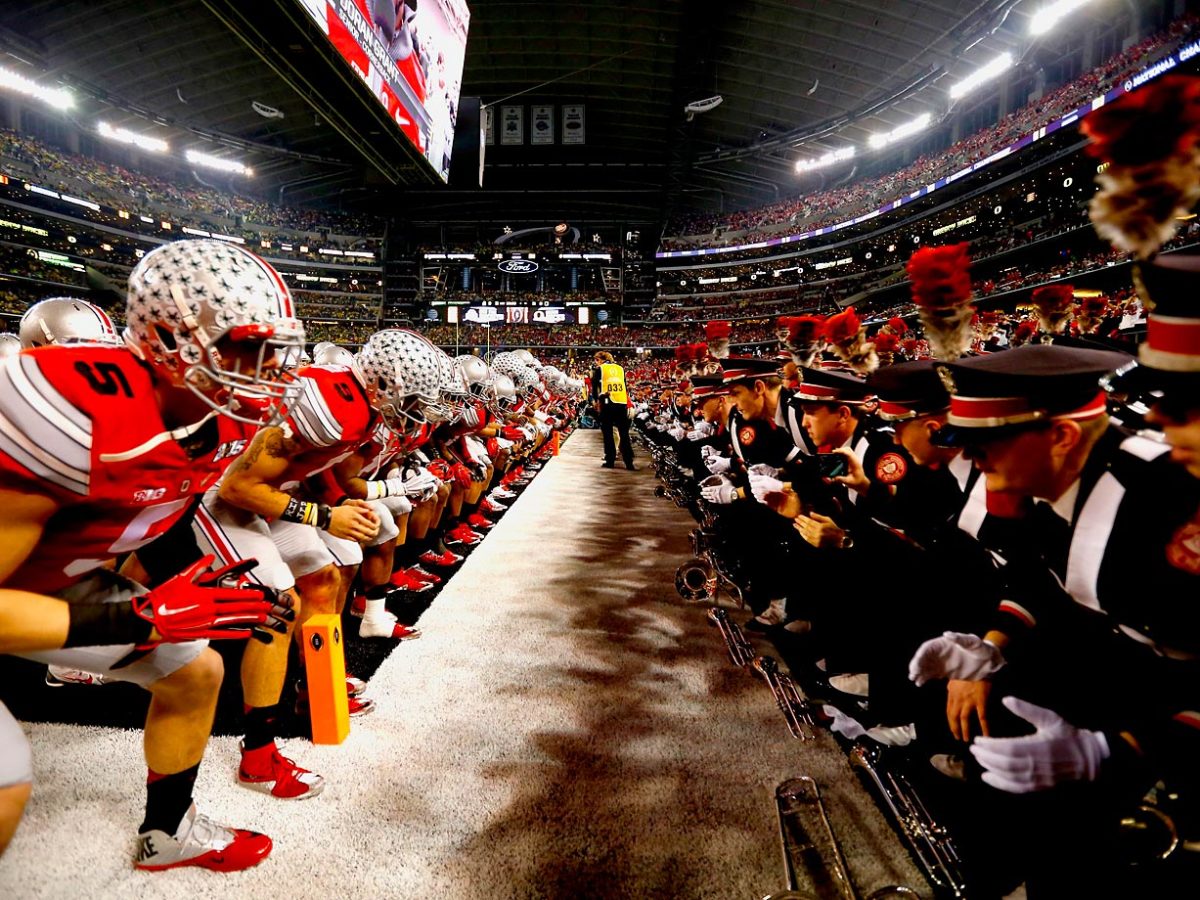
Ohio State Buckeyes players line up across the school's marching band before the start of the National Championship game.
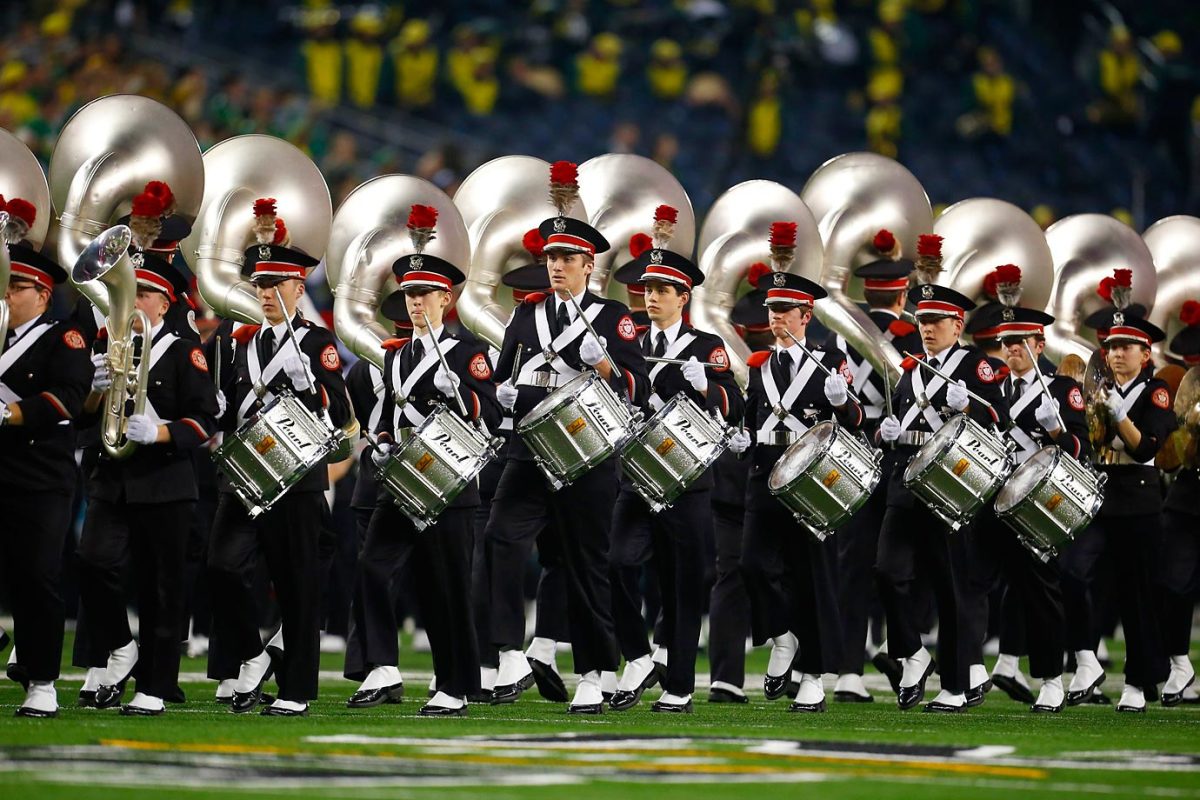
The Ohio State Buckeyes marching band performs.
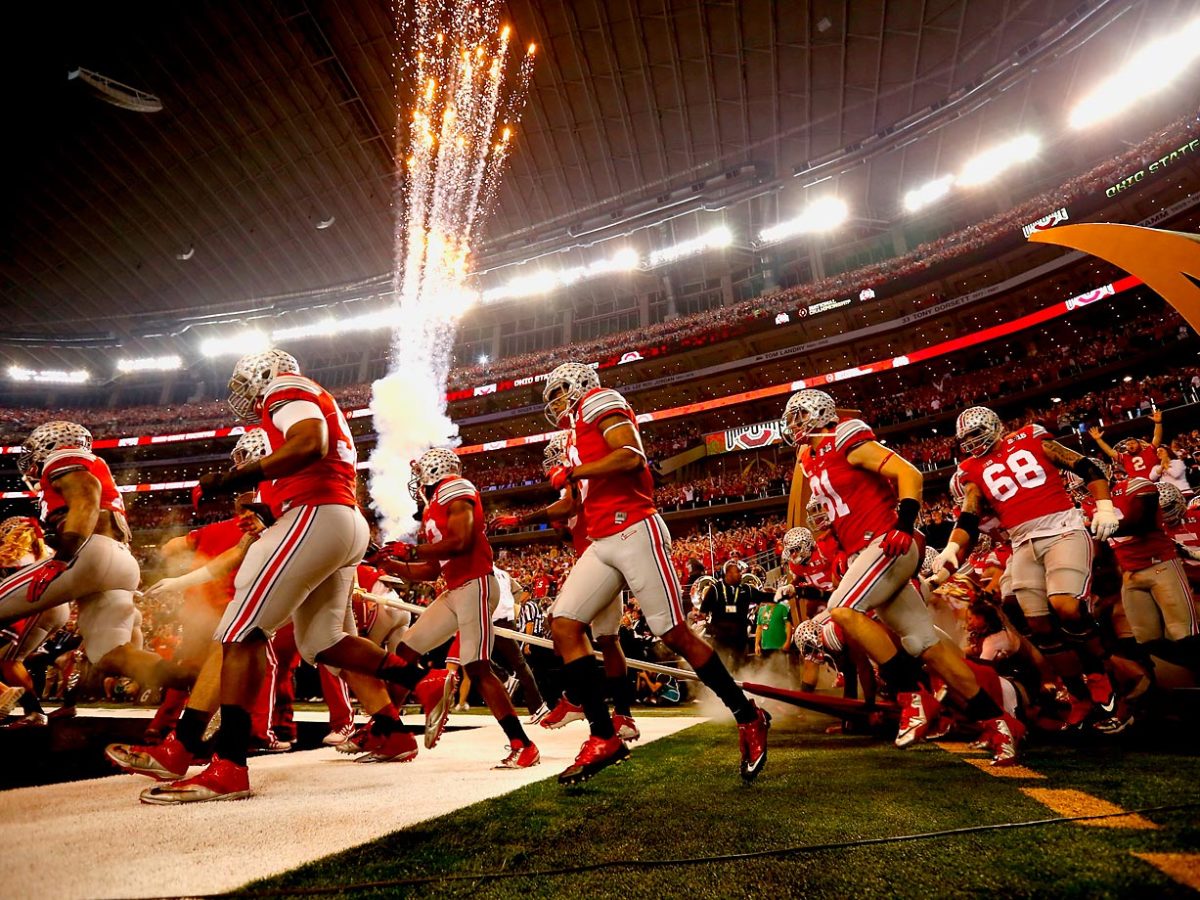
Ohio State players run out onto the field before the start of the first ever College Football Playoff National Championship game.
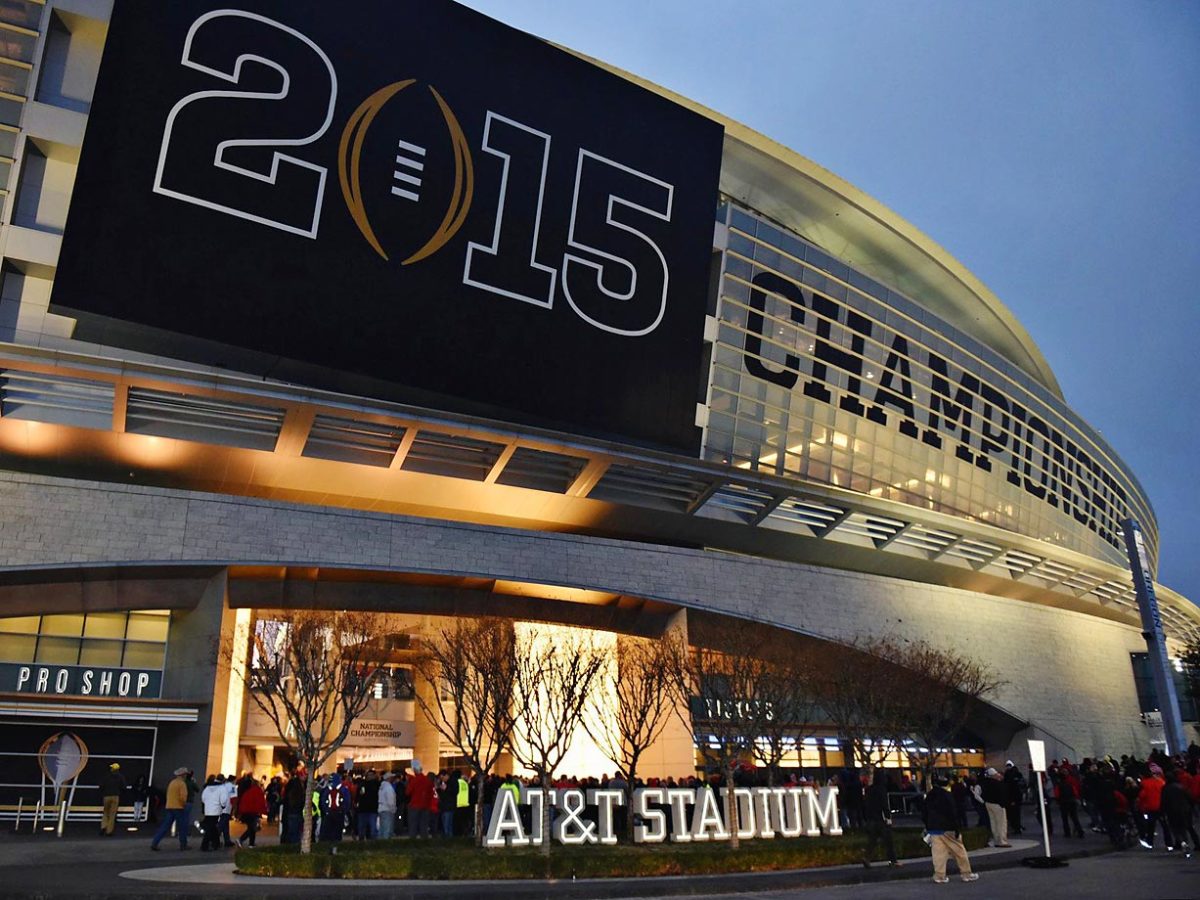
AT&T Stadium, home of the NFL's Dallas Cowboys, hosted the first final of the new College Football Playoff.
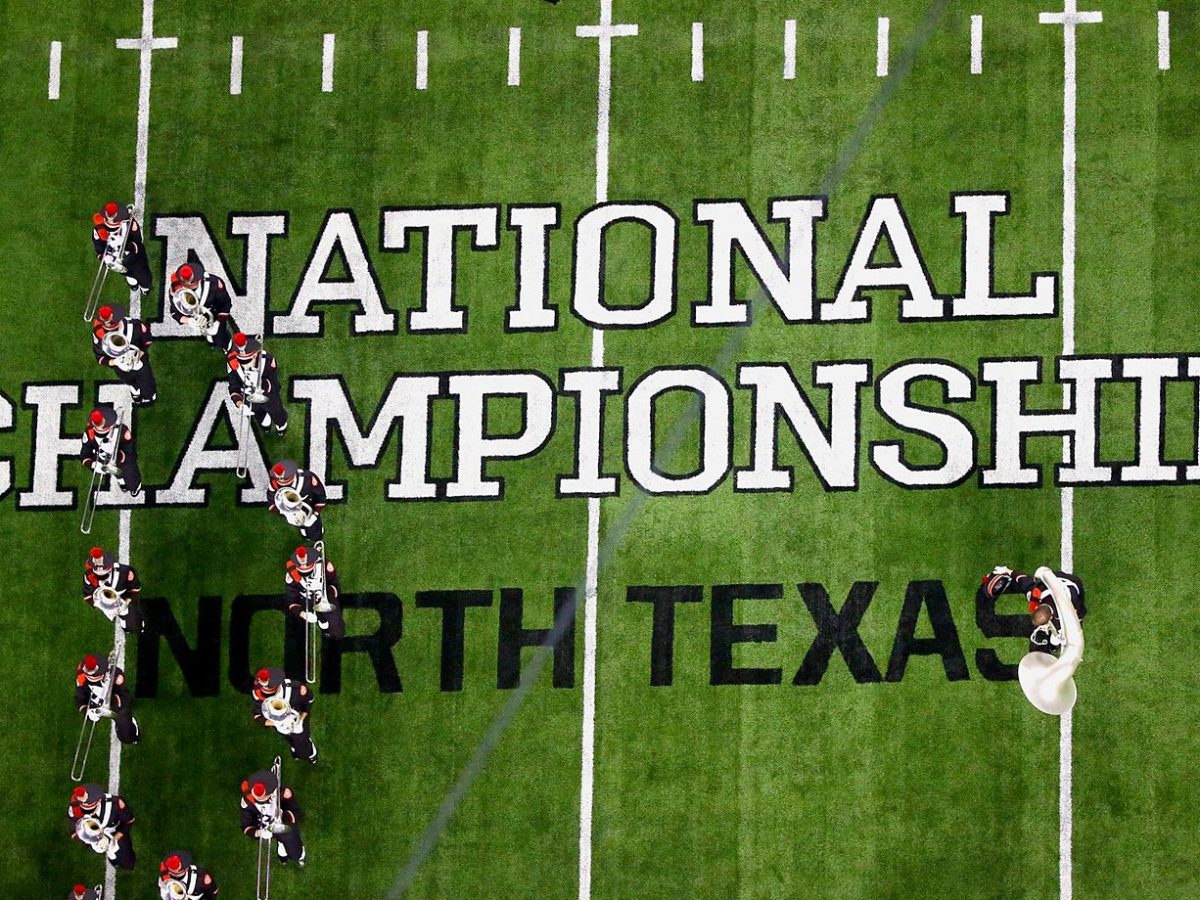
The Ohio State marching band performs on the field during the first championship game.
